-
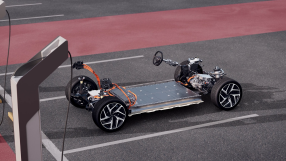
Audi Q6 e-tron – Battery and charging technology Audi Q6 e-tron – Battery and charging technology
Audi Q6 e-tron – Battery and charging technology
This technical animation shows the new battery and charging technology of the Audi Q6 e-tron. Powerful, compact, and scalable electric motors, as well as a newly developed lithium-ion battery consisting of twelve modules with a total gross capacity of 100 kWh (94.9 net) ensure a range of up to 625 km (388 mi).
- Available media:
-


-
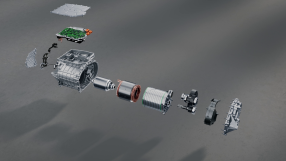
Audi Q4 e-tron – Permanent magnet synchronous motor (PSM) Audi Q4 e-tron – Permanent magnet synchronous motor
Audi Q4 e-tron – Permanent magnet synchronous motor
Performance and efficiency
The Q4 e-tron with up to 250 kW (340 PS) and 545 Nm torque system output, with newly developed rear-axle drive, provides greater range and effortless power delivery.
- Available media:
-

-
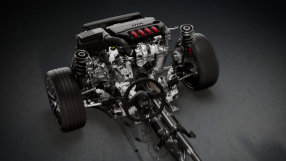
Audi S3 Sedan – Vehicle dynamics Audi S3 Sedan – Vehicle dynamics
Audi S3 Sedan – Vehicle dynamics
This animation shows how in the Audi S3 Sedan the powertrain and the chassis provide first class driving dynamics.
- Available media:
-

-
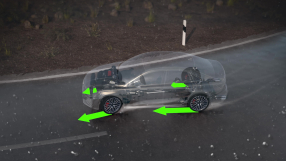
Audi S3 Sedan – Torque Splitter Audi S3 Sedan – Torque Splitter
Audi S3 Sedan – Torque Splitter
Following the RS 3, the torque splitter is now also available in the S3, increasing both agility and stability.
- Available media:
-

-
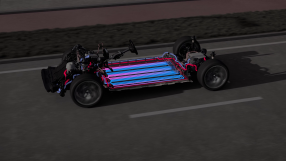
Audi Q6 e-tron – Drive system and thermal management Audi Q6 e-tron – Drive system and thermal management
Audi Q6 e-tron – Drive system and thermal management
This technical animation shows the drive system in the Audi Q6 e-tron and explains the new predictive thermal management system, which regulates the cooling or heating circuit as required for optimum battery performance.
- Available media:
-


-
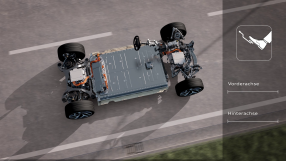
Audi Q6 e-tron – Recuperation and brake blending Audi Q6 e-tron – Recuperation and brake blending
Audi Q6 e-tron – Recuperation and brake blending
This technical animation shows the function of brake blending and recuperation in the Audi Q6 e-tron. Around 95 percent of all braking processes in everyday driving can be covered by recuperation and thus contribute to the efficeincy and range of the vehicle.
- Available media:
-


-
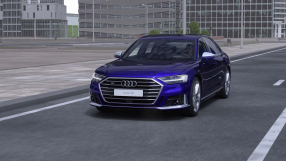
Audi S8 – Cylinder on Demand Audi S8 – Cylinder on Demand
Audi S8 – Cylinder on Demand
The S8, with a power output of 382 kW (520 hp), is the large sports sedan from Audi. Its sonorous 4.0 TFSI accelerates the S8 from 0 to 100 km/h (62.1 mph) in 4.1 seconds. The combined fuel consumption of the S8 is just 9.6 liters per 100 kilometers (24.5 US mpg), and it emits 225 grams CO2 per kilometer (362.1 g/mi). The COD (cylinder on demand) system plays a major role here, too. Active Noise Cancellation (ANC) sends precise phase-cancellation noise into the interior over the sound system’s speakers to compensate for noise generated in the cabin when running on four cylinders.
- Available media:
-

-
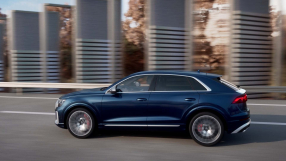
Audi SQ8 – 8-Zylinder-TFSI-Antrieb mit cylinder on demand (COD) und Sportabgasanlage Audi SQ8 – 8-cylinder TFSI engine with cylinder on demand (COD) and sport exhaust system
Audi SQ8 – 8-cylinder TFSI engine with cylinder on demand (COD) and sport exhaust system
As part of the product upgrade, the SQ8 TFSI now runs on the established 4.0 TFSI with 373 kW (507 PS) and 770 Nm of torque with fast- shifting eight-speed tiptronic and quattro permanent all-wheel drive. At low to medium loads and acceleration speeds the cylinder on demand system deactivates cylinders 2, 3, 5, and 8 in the upper gears. The switching process takes just milliseconds and goes virtually unnoticed by the driver. To achieve the sporty sound, there is an exhaust flap on each tailpipe that modulates the sound depending on load and rev speed.
- Available media:
-

-
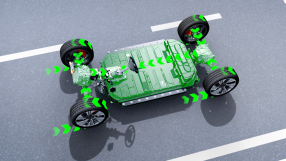
Audi Q8 e-tron – Recuperation Audi Q8 Sportback e-tron – Recuperation
Audi Q8 Sportback e-tron – Recuperation
Intelligent braking and recuperation concept
In 90 percent of all braking situations, the Audi Q8 e-tron* does not use its disk brakes, thanks to the intelligent recuperation concept. Up to a deceleration of 0.3 g, the system recuperates via the electric motors alone, without using the conventional brakes which then work as generators, converting the kinetic energy into electrical energy. Only when the driver uses the brake pedal to decelerate more than 0.3 g do the internally ventilated 18-inch wheel brakes come into play.
- Available media:
-

-
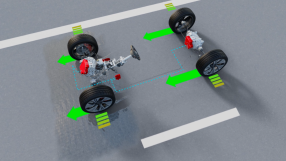
Audi Q8 Sportback e-tron – Electric quattro Audi Q8 Sportback e-tron – Electric quattro
Audi Q8 Sportback e-tron – Electric quattro
Improved efficiency, longer range: Drive system
The electric drive system in the Audi Q8 e-tron* meets the diverse demands that drivers place on a luxury SUV with a high-performance total package, offering superior traction, even in difficult road conditions or critical situations, thanks to the electric all-wheel drive. With its efficient powertrain, the Audi Q8 e-tron* boasts dynamic driving performance and thanks to improvements to many components of the drive concept, the Q8 e-tron* impresses with consumption values standard for its class, and increased range. The development team gave “the heart of the engine” a thorough update, as technical project manager Jens Müssig explains: “All the changes help to increase the range of the Audi Q8 e-tron* without diminishing its sporty qualities.” This is also true of the sportiest electric luxury SUV, the Audi SQ8 e-tron*. Powered by three electric motors – two on the rear axle, one on the front axle – it offers superior performance in both longitudinal and lateral dynamics with electric torque vectoring.
- Available media:
-

-
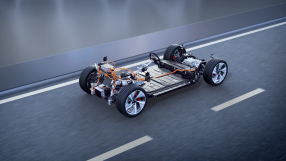
Audi Q8 e-tron – Drive and efficiency Audi Q8 e-tron – Drive and efficiency
Audi Q8 e-tron – Drive and efficiency
Revised rear-axle motor and electric torque vectoring for better dynamics
For the new Audi Q8 e-tron*, the asynchronous motor concept on the rear axle was modified. Instead of 12 coils generating the electromagnetic field, there are now 14. The motor consequently generates a stronger magnetic field with similar electricity input, which in turn allows for more torque. If this isn’t needed, the electric motor requires less energy to generate torque. This lowers consumption and increases range. With the e-tron range’s S model, Audi used a three-motor concept for the first time in large-scale production.
- Available media:
-

-
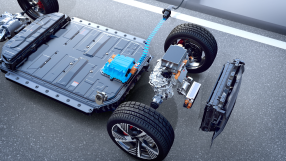
Audi Q8 e-tron – Battery and charging technology Audi Q8 e-tron – Battery and charging technology
Audi Q8 e-tron – Battery and charging technology
More battery capacity and higher charging performance
Two battery sizes can be selected. The battery of the Q8 50 e-tron* has a storage capacity of 89 net kilowatt-hours (95 gross kWh), while the more powerful versions of the Q8 55 e-tron* and SQ8 e-tron* have 106 net kWh (114 gross kWh). Thanks to an adjustment to the battery management system, the battery capacity usable for customers has increased as well. At a high-powered charging station, the Audi Q8 50 e-tron* reaches a maximum charging performance of 150 kW. With the Q8 55 e-tron* and SQ8 e-tron*, the maximum charging performance increases to up to 170 kW. The big battery can be charged from ten to 80 percent during a roughly 31-minute charging stop – under ideal conditions, this corresponds to a range of up to 420 kilometers (according to WLTP). At an AC charging station or wallbox, the Audi Q8 e-tron* charges at up to 11 kW. Audi offers an optional AC charging performance of up to 22 kW.
- Available media:
-


-
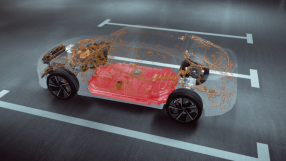
e-tron – Prediction of remaining electric range Audi e-tron – Prediction of remaining electric range
Audi e-tron – Prediction of remaining electric range
In addition to external factors such as congestion, route topography, or outside temperatures, driver-specific influences including individual driving style or the use of comfort features also play an important role. The remaining range display in the all-electric e-tron models from Audi passes this test in flying colors by factoring in all relevant parameters and providing a realistic picture.
- Available media:
-

-
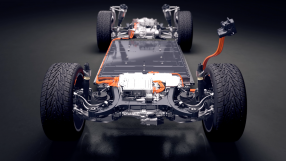
Audi urbansphere concept – Premium platform electric -
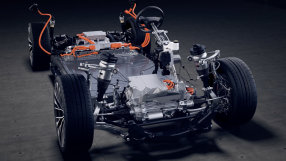
Audi A6 Avant e-tron concept - PPE Audi A6 Avant e-tron concept – Premium Platform Electric
Audi A6 Avant e-tron concept – Premium Platform Electric
The key element of the future PPE fleet is a battery module between the axles that holds around 100 kWh of energy in the Avant version of the A6 e-tron concept.
- Available media:
-

-
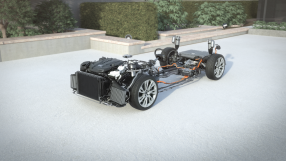
Audi A8 TFSI e quattro – Plug-in hybrid technology Audi A8 TFSI e quattro – Plug-in hybrid technology
Audi A8 TFSI e quattro – Plug-in hybrid technology
The Audi A8 60 TFSI e quattro11 and theA8 L 60 TFSI e quattro12 are the plug-in hybrid models (PHEV) in the series. With these, compact electric motors support the 3.0 TFSI.
- Available media:
-


-
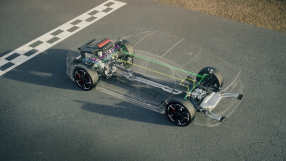
Audi RS 3 – Performance and drive select Audi RS 3 Sedan – Performance and RS drive select modes
Audi RS 3 Sedan – Performance and RS drive select modes
The standard RS sports suspension features newly developed shock absorbers and a valve system both specific to the RS 32. The valves ensure that the shock absorbers exhibit a particularly sensitive response as part of the rebound and compression characteristics. This allows the suspension to respond to the respective driving situation even faster and more effectively.
- Available media:
-


-
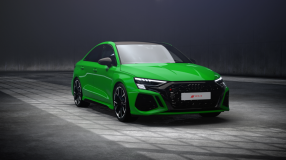
Audi RS 3 – Powertrain Audi RS 3 Sedan – Drivetrain
Audi RS 3 Sedan – Drivetrain
With its five-cylinder, high-performance engine, the Audi RS 32 is one-of-a-kind in the segment. The 2.5 TFSI has won the “International Engine of the Year” award nine times in a row. In the latest generation of the compact sports car, the engine is now more powerful than ever before.
- Available media:
-


-
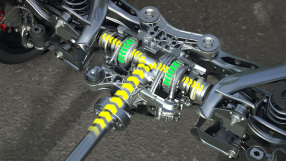
Audi RS 3 – RS Torque Splitter Audi RS 3 - RS Torque Splitter
Audi RS 3 - RS Torque Splitter
The Audi RS 3 prototype represents the epitome of unadulterated driving dynamics. This is Audi’s first vehicle to feature the RS Torque Splitter, which distributes drive torque between the rear wheels in a fully variable manner. This results in optimal stability and maximum agility – especially when cornering at high speeds.
- Available media:
-


-
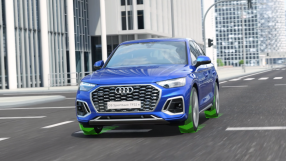
Audi Q5 Sportback 55 TFSI e quattro – PHEV with predictive operating strategy Audi Q5 55 TFSI e quattro – PHEV with predictive operating strategy
Audi Q5 55 TFSI e quattro – PHEV with predictive operating strategy
Audi is expanding its selection of plug-in hybrid models by launching sales of the Q5 Sportback 55 TFSI e quattro on European markets. The elegant SUV coupé (combined fuel consumption in l/100 km (US mpg)*: 2.0–1.8 (117.6–130.7); combined electric power consumption in kWh/100 km (62.1 mi)*: 19.6– 19.3; combined CO2 emissions in g/km (g/mi)*: 45–42 (72.4–67.6)) delivers 270 kW (367 PS). The lithium-ion battery can store 14.4 kWh of net power – enough for an electric range of up to 61 kilometers (37.9 mi) according to the WLTP (71 kilometers (44.1 mi) under the NEDC).
- Available media:
-

-
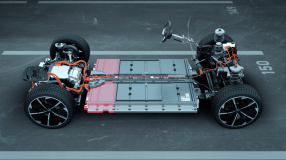
Audi Q4 e-tron – Modular electric platform Audi Q4 e-tron – Modular electric platform
Audi Q4 e-tron – Modular electric platform
The Audi Q4 e-tron and the Q4 Sportback e-tron include a wide range of drives – from the city cruiser to the powerful quattro. They are being launched on the European markets with two different battery sizes and three motor line-ups.
- Available media:
-



-
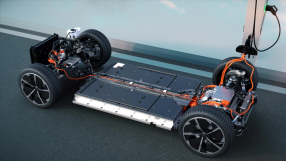
Audi Q4 e-tron – Charging management Audi Q4 e-tron – Charging management
Audi Q4 e-tron – Charging management
The thermal management system aims to get the battery up to the ideal temperature range of around 30 degrees Celsius quickly after it is started and to keep it there until the end of the journey.
- Available media:
-


-
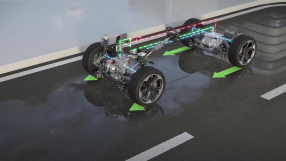
Audi Q4 Sportback e-tron – electric quattro Audi Q4 Sportback e-tron – Elektric quattro
Audi Q4 Sportback e-tron – Elektric quattro
In the electric all-wheel drive, the two electric motors work together with maximum efficiency. During moderate driving, the PSM in the rear works the drive on its own for reasons to do with efficiency and traction. When the driver asks for more power than it can offer, the front electric motor is activated – in just a few hundredths of a second
- Available media:
-


-
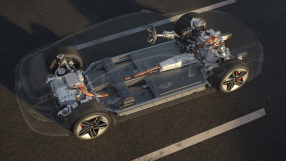
Audi RS e-tron GT – Antriebskonzept Audi RS e-tron GT – Drive concept
Audi RS e-tron GT – Drive concept
The purely electric gran turismo from Audi offers dynamic performance in both engine versions: The e-tron GT quattro (combined electric power consumption in kWh/100 km (62.1 mi)*: 19.6– 18.8 (NEDC), combined CO2 emissions in g/km (g/mi)*: 0) accelerates from zero to 100 km/h (62.1 mph) in 4.1 seconds, while the RS model takes 3.3 seconds (in boost mode in each case). The top speed is 245 km/h (152.2 mph) and 250 km/h (155.3 mph) (governed), respectively.
- Available media:
-


-
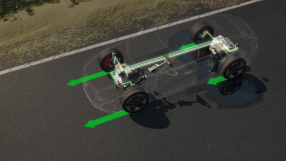
Audi RS e-tron GT – e-quattro Audi RS e-tron GT – Electric quattro and recuperation
Audi RS e-tron GT – Electric quattro and recuperation
The e-tron GT quattro (combined electric power consumption in kWh/100 km (62.1 mi)*: 19.6– 18.8 (NEDC), combined CO2 emissions in g/km (g/mi)*: 0) and the RS e-tron GT (combined electric power consumption in kWh/100 km (62.1 mi)*: 20.2–19.3 (NEDC), combined CO2 emissions in g/km (g/mi)*: 0) usually drive with electric all-wheel drive, with only the “efficiency” mode of the Audi drive select dynamic handling system prioritizing front-wheel drive. In the event of a slippery road surface, high power requirements, or fast cornering, more torque can be distributed to the rear wheels, and around five times faster than with a mechanical quattro drivetrain. The electric all-wheel drive regulates the drive torque distribution between the axles – continuously, fully variably, and within a few thousandths of a second. The quattro principle of the four-wheel drive that Audi introduced to the market more than 40 years ago presents itself on a new, fascinating technological level.
- Available media:
-


-
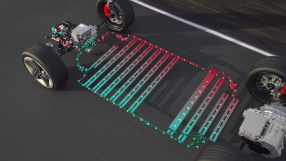
Audi RS e-tron GT – Thermal management Audi RS e-tron GT – Thermal management
Audi RS e-tron GT – Thermal management
Four separate coolant circuits regulate the temperature in the high-voltage components and the interior, each at its own temperature level. They can be interconnected flexibly as required. If the driver demands a high output several times in a row, valves couple the coolant circuit of the battery with the refrigerant circuit of the air conditioning system – the intensive cooling keeps the performance of the drive at a consistently high level.
- Available media:
-

-
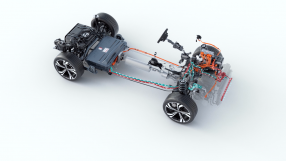
Audi Q3 Sportback 45 TFSI e – system layout Audi Q3 Sportback 45 TFSI e – System layout
Audi Q3 Sportback 45 TFSI e – System layout
Great driving pleasure and high efficiency – the powertrain of these two new models offers both. The 1.4 TFSI and the electric motor together generate 180 kW of system output (245 PS) and system torque of 400 Nm (295.02 lb-ft). Both the Q3 45 TFSI e and the Sportback take 7.3 seconds to burst from 0 to 100 km/h (62.1 mph), and both reach a top speed of 210 km/h (130.5 mph).
- Available media:
-

-
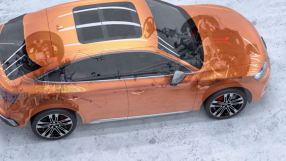
Audi SQ5 – Twindosing-Technology Audi SQ5 Sportback – Twin dosing technology
Audi SQ5 Sportback – Twin dosing technology
For exhaust gas aftertreatment, Audi uses twin-dosing technology based two SCR catalytic converters working together. The first of these is located directly behind the manifold in the exhaust gas system, where it also functions as a particulate filter.
- Available media:
-

-
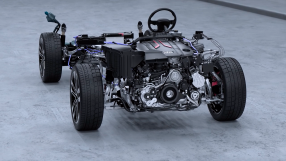
Audi SQ5 – V6 3.0 TDI_en Audi SQ5 Sportback – V6 3.0 TDI
Audi SQ5 Sportback – V6 3.0 TDI
Even sharper, sportier, and more efficient: The optimized Audi SQ5 TDI now looks even more impressive. Its V6 three-liter diesel engine with an output of 251 kW (341 PS) delivers its power smoothly and forcefully. The sharper design underlines the sporty character of the sport SUV. Rear lights featuring the new digital OLED technology are available as an option for the top Q5 model.
- Available media:
-

-
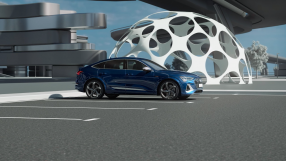
Audi e-tron S Sportback – drivetrain construction, twin motor and coolant circuit Audi e-tron S Sportback – Twin motor and electric Torque Vectoring
Audi e-tron S Sportback – Twin motor and electric Torque Vectoring
The drive has been programmed for efficiency in everyday life; in normal driving mode, only the rear electric motors work. The front drive is unpowered but switches itself on – with the driver barely noticing – if the driver needs more power.
- Available media:
-

-
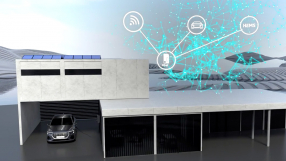
Audi e-tron Sportback Private Charging and Public Charging DE Audi e-tron Sportback – Private Charging and Public Charging
Audi e-tron Sportback – Private Charging and Public Charging
The highly flexible thermal management, which comprises four separate circuits, regulates the temperature of the high-voltage components with maximum efficiency. This enables rapid DC charging, a long battery life cycle, and reproducible performance even under heavy loads.
- Available media:
-

-
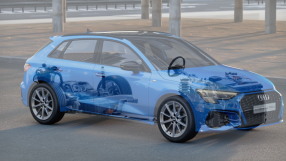
Audi A3 Sportback 40 TFSI e – Drive Audi A3 Sportback 40 TFSI e – Drive
Audi A3 Sportback 40 TFSI e – Drive
The drive management of the compact plug-in hybrid is designed for efficient driving. It always starts electrically, up to a temperature of -28 °C. Drivers can prioritize electric drive with the EV button. It can cover up to 78 kilometers (48.5 mi)(according to the NEDC standard, 67 kilometers (41.6 mi) in the WLTP), that is the majority of everyday journeys, with zero local emissions.
- Available media:
-

-
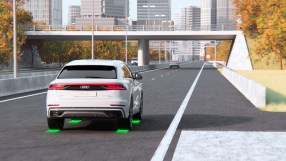
Audi Q8 TFSI e quattro – drivetrain Audi Q8 TFSI e quattro – System layout, driving modes and operating strategy
Audi Q8 TFSI e quattro – System layout, driving modes and operating strategy
Audi is continuing its electrification offensive with the Q8 TFSI e quattro: The SUV Coupé is already the seventh model with plug-in hybrid drive that has been newly introduced on the market since mid-2019. Audi is putting this drive technology completely at the service of the customer: It provides customers with a confident electric driving experience, simple charging management, and a high level of everyday usability.
- Available media:
-

-
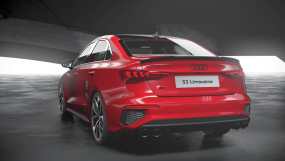
Audi S3 Sedan – 2.0 TFSI Audi S3 Sedan – 2.0 TFSI
Audi S3 Sedan – 2.0 TFSI
With 228 kW (310 PS) of power and 400 Nm (295.0 lb-ft) of torque, the new S3 models are powered by the 2.0 TFSI engine.
- Available media:
-

-
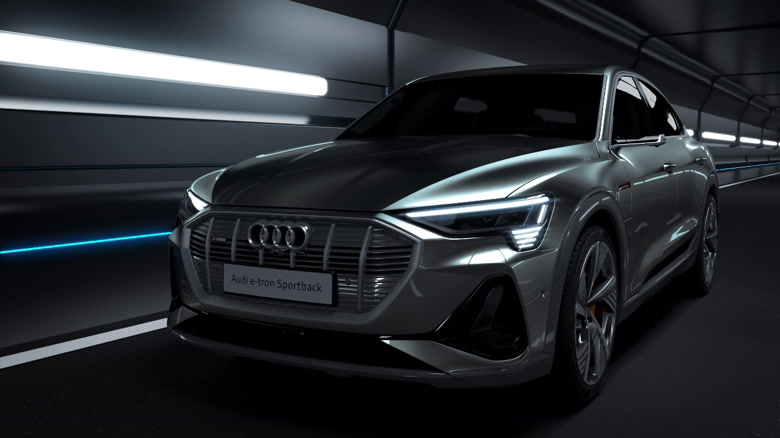
Audi e-tron Sportback - Charging and thermal management -
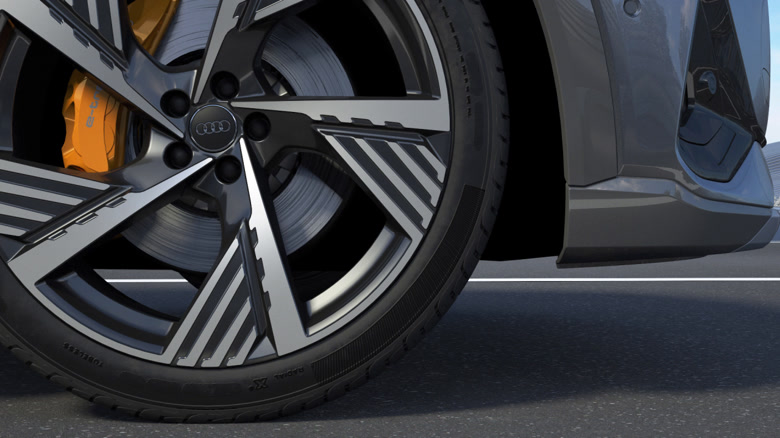
Audi e-tron Sportback - Electric quattro -
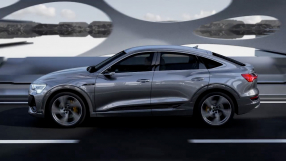
Audi e-tron Sportback - Recuperation -
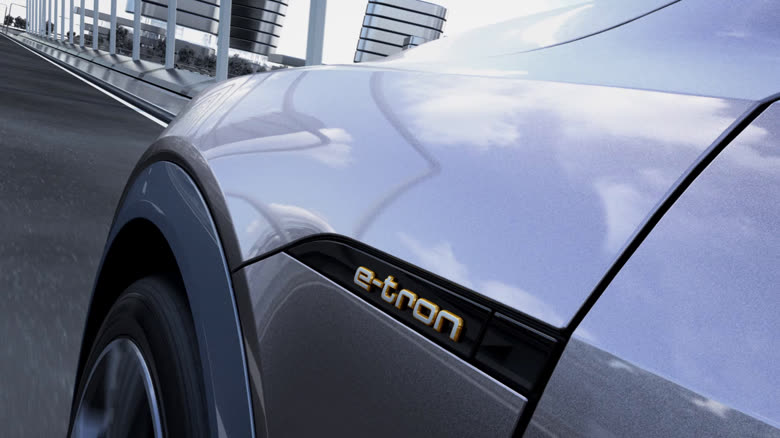
Audi e-tron Sportback - Battery and safety -
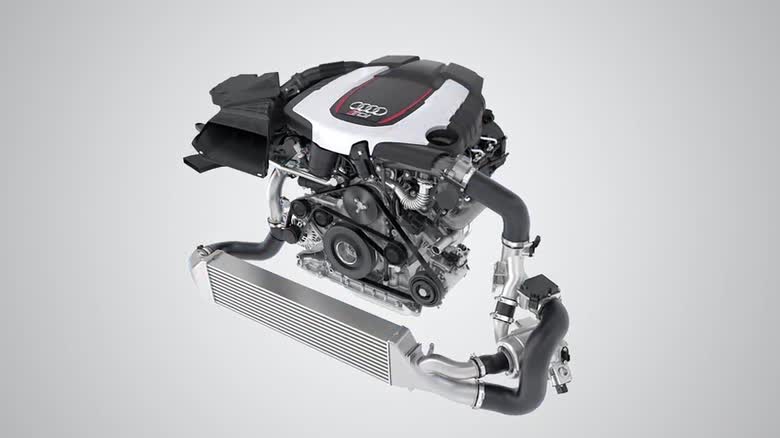
3.0 TDI Biturbo with electrically driven compressor Electric biturbo
Electric biturbo
The TDI engine gets its power from the boost pressure developed by the turbocharger, which is dependent on the energy of the exhaust. The electric biturbo breaks this dependency. Its supplemental electric compressor enables a rapid buildup of boost pressure and high torque even at low engine speeds. 25 years after the invention of the TDI, Audi is now taking the next big step and making the diesel engine even more emotional and sporty.
- Available media:
-

-
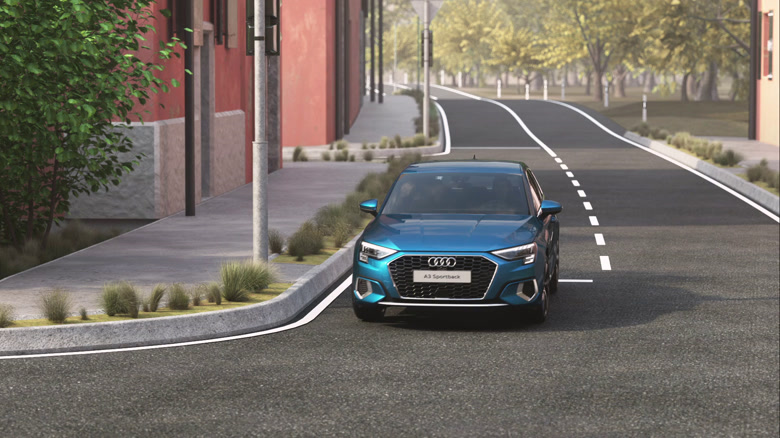
Audi A3 Sportback – 48V mild hybrid system Audi A3 Sportback – the 1.5 TFSI as a mild hybrid
Audi A3 Sportback – the 1.5 TFSI as a mild hybrid
The 1.5 TFSI with a mild-hybrid system (combined fuel consumption in l/100 km: 5.0–4.7 (47.0–50.0 US mpg)*; combined CO2 emissions in g/km: 115–109 (185.1–175.4 g/mi)*) has the same output as its sister engine. The performance is also identical; however, it is even more efficient.
- Available media:
-

-
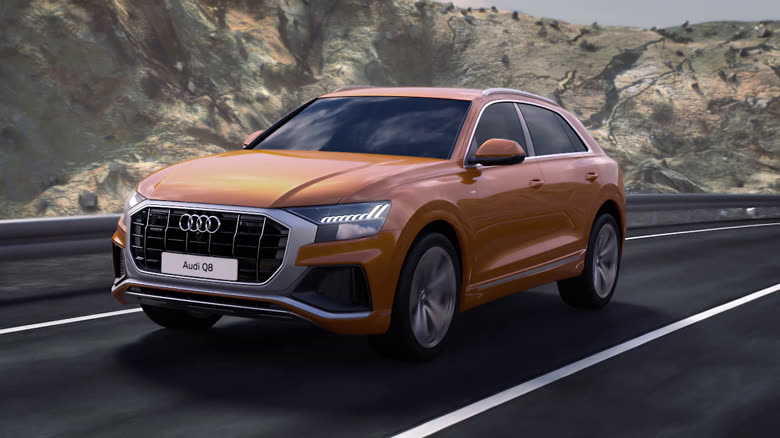
Audi Q8 - MHEV_EN -
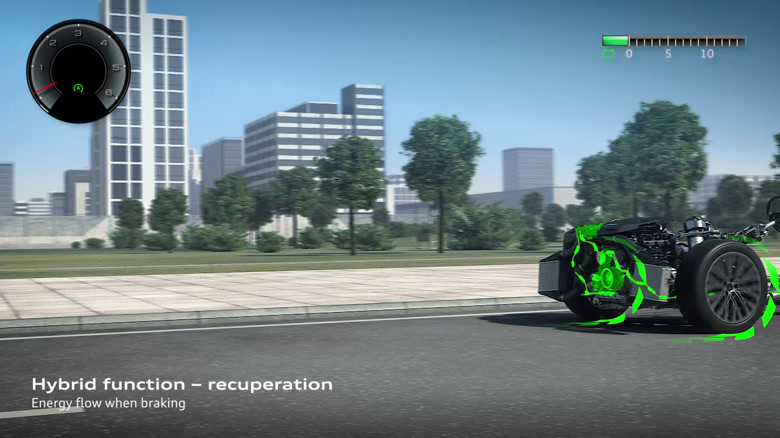
Audi A8 - Mild Hybrid Electric Vehicle (MHEV) components Audi A8 – Mild Hybrid Electric Vehicle (MHEV) components
Audi A8 – Mild Hybrid Electric Vehicle (MHEV) components
The new mild-hybrid technology (MHEV = mild hybrid electric vehicle) is standard with all A8 engines. It reduces fuel consumption by up to 0.7 liters (0.2 gal) per 100 kilometers (62.1 mi) in actual driving. The MHEV technology from Audi is based on a newly developed 48 volt main vehicle electrical system. It comprises a compact lithium-ion battery with an electrical capacity of 10 Ah, located in the luggage compartment underneath the loading floor of the A8, as well as a belt alternator starter (BSG) connected to the crankshaft.
- Available media:
-

-
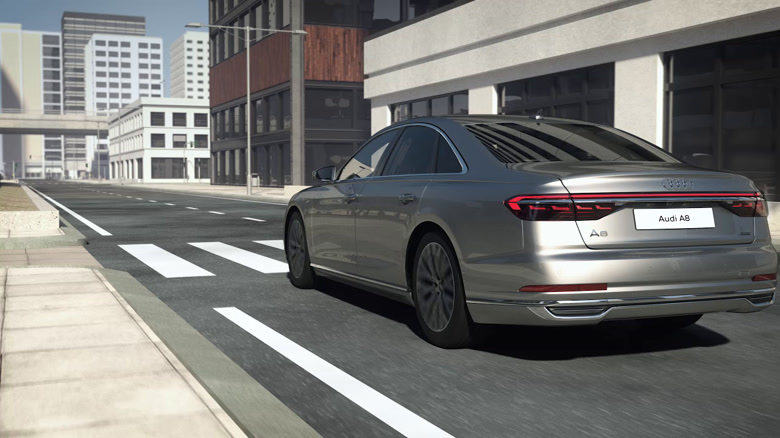
Audi A8 - Mild Hybrid Electric Vehicle (MHEV) with active suspension Audi A8 – Mild Hybrid Electric Vehicle (MHEV) with active suspension
Audi A8 – Mild Hybrid Electric Vehicle (MHEV) with active suspension
Even more efficient: engines with MHEV technology
At its market introduction in Europe, the new A8 will start out with two extensively reengineered V6 turbo engines, a 3.0 TDI with 210 kW (286 hp) (Combined fuel consumption in l/100 km: 5.8 - 5.6 (40.6 - 42.0 US mpg)*; Combined CO2 emissions in g/km: 152 - 145 (244.6 - 233.4 g/mi)*) and a 3.0 TFSI with 250 kW (340 hp) (Combined fuel consumption in l/100 km: 7.8 - 7.5 (30.2 - 31.4 US mpg )*; Combined CO2 emissions in g/km: 178 - 171 (286.5 - 275.2 g/mi)*).- Available media:
-

-
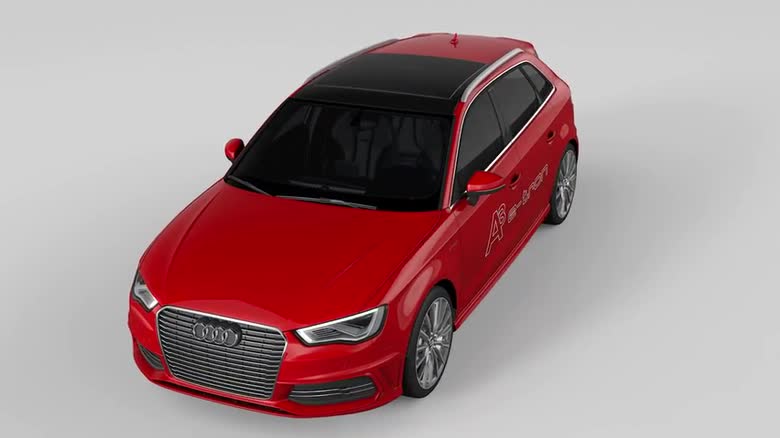
Audi A3 e-tron Audi A3 e-tron
Audi A3 e-tron
From 0 to 100 km/h (62.14 mph) in 7.6 seconds and a top speed of 222 km/h (137.94 mph) – the Audi A3 Sportback e-tron adds an extra highlight to the sporty character of the compact premium car line. In accordance with the ECE standard for plug-in hybrid vehicles, its average CO2 emissions are a mere 35 grams per km (56.33 g/mile) – equivalent to consumption of 1.5 liters of fuel per 100 km (156.81 US mpg).**
- Available media:
-



-
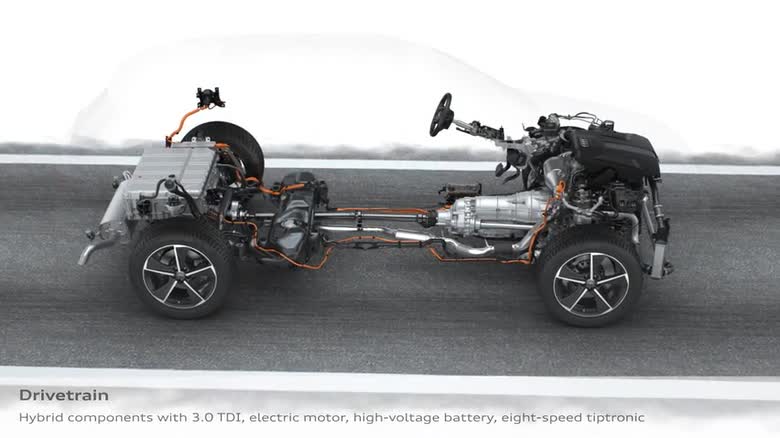
Audi Q7 e-tron 3.0 TDI quattro Audi Q7 e-tron 3.0 TDI quattro
Audi Q7 e-tron 3.0 TDI quattro
It accelerates from a standstill to 100 km/h (62.1 mph)in six seconds, and yet consumes not even two liters of diesel per 100 kilometers (117.6 US mpg). The Audi Q7 e-tron quattro is sporty, comfortable and at the same time highly efficient. The world’s first TDI plug in hybrid with quattro drive, it is also the first plug-in hybrid with a diesel engine from Audi.
- Available media:
-

-
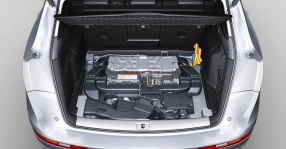
Battery
Battery
The battery in an electrified vehicle powertrain is a highly complex system. The lithium-ion technology offers opportunities and challenges in a number of areas – weight, energy, the package, safety, lifetime and, not least, cost.
- Available media:
-

-
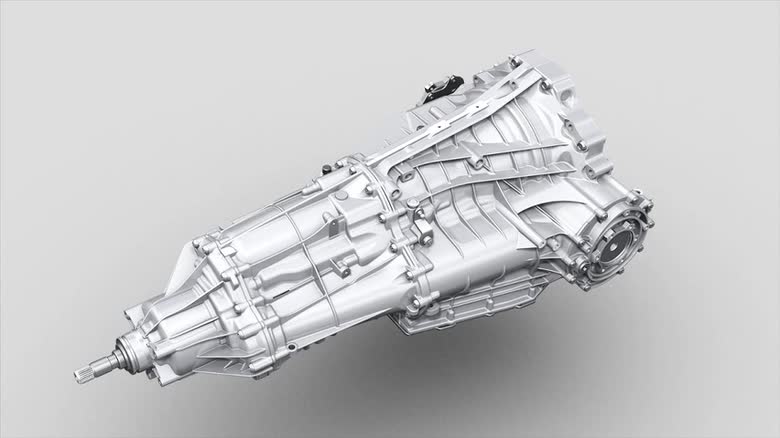
Electric motor in the Audi Q5 hybrid quattro Electric motors
Electric motors
Electric motors are outstanding in their high reliability, low weight and high efficiency – in the range of 93 to 97 percent through a relatively broad rpm range. Unlike internal combustion engines, electric motors yield their maximum torque at extremely low rpms, practically from the starting position. For this reason, single-stage transmissions are usually all that’s needed in purely electrical vehicles.
- Available media:
-


-
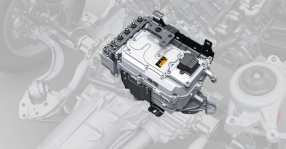
Power electronics
Power electronics
Power electronics is one of the most complex and also most costly components in the electrified powertrain: a pulse-controlled inverter that transforms the battery’s DC voltage to AC voltage as required by the electric motor.
- Available media:
-

-
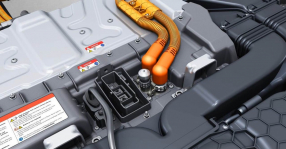
Safety
Safety
Audi pays strict attention to safety where electric mobility is concerned. The battery, the cables and all other high-voltage components are elaborately protected – in case of an accident, during operation, in assembly and during servicing.
- Available media:
-

-
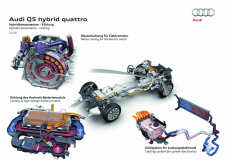
Thermal management
Thermal management
Thermal management for the future is a highly complex concept with promising new solutions. Audi has stepped up the pace of development in this area.
- Available media:
-

-
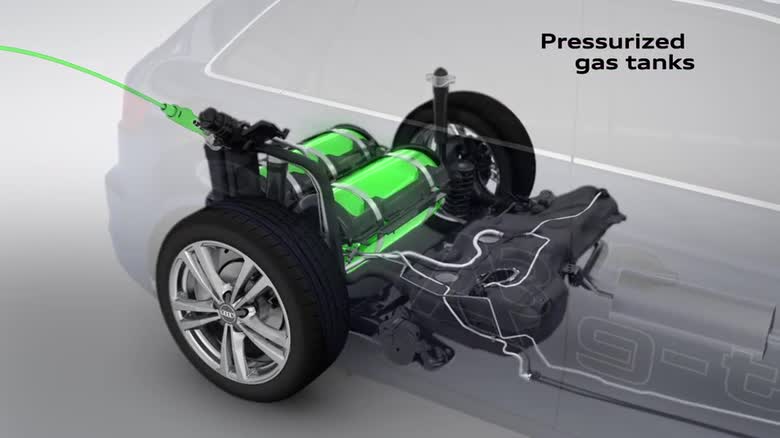
Audi A3 g-tron Audi A3 g-tron
Audi A3 g-tron
The Audi A3 Sportback g-tron, the brand’s first natural gas car to go into production, reveals the sheer depth of the technological expertise of Audi – from ultra lightweight technology through the highly advanced infotainment to the driver assistance systems. It showcases state-of-the-art CNG technology (CNG = compressed natural gas), complete with the fuel storage technology. Its two pressurized tanks beneath the trunk floor each hold around seven kilograms (15.43 lb) of gas; they essentially use the recess for the spare wheel, thus impinging only minimally on the load capacity.
- Available media:
-


-
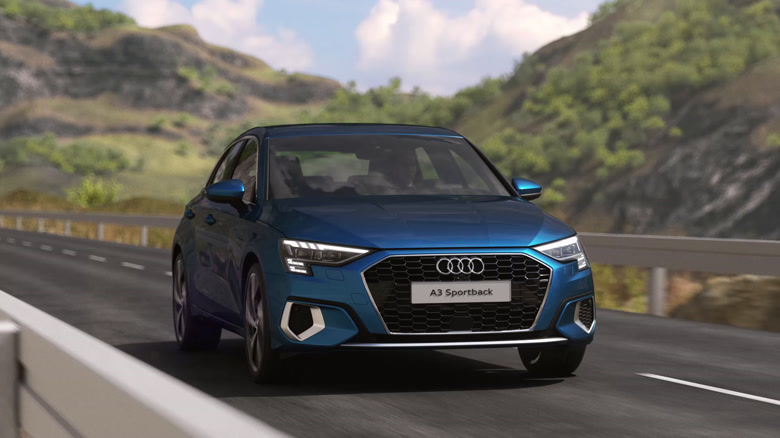
Audi A3 Sportback – Twin dosing Audi A3 Sportback – Twin dosing
Audi A3 Sportback – Twin dosing
In addition, Audi is using an innovative exhaust-gas aftertreatment system in the 2.0 TDI known as twin dosing. By injecting AdBlue into the exhaust system at two separate points connected in series, it enables the injection of urea to be distributed far better and in a way that is appropriate to the situation, reducing nitrogen oxides significantly.
- Available media:
-

-
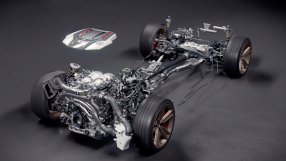
Audi RS 5 Sportback – 2.9 TFSI V6 twin turbo Audi RS 5 Sportback – 2.9 TFSI V6 twin turbo
Audi RS 5 Sportback – 2.9 TFSI V6 twin turbo
Immense pulling power and high output combined with efficiency: Even after the revision, the output of the 2.9 TFSI remains unchanged at 331 kW (450 PS). The V6 twin-turbo delivers between 1,900 and 5,000 rpm; during this process, each charger supplies a cylinder bank with compressed air and 600 Nm (442.5 lb-ft) of torque is supplied to the crankshaft.
- Available media:
-

-
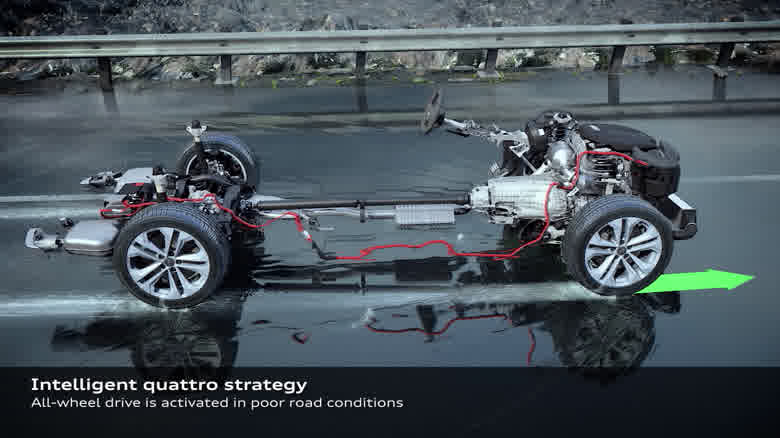
Audi A4 Allroad – quattro ultra and MHEV-Technology Audi A4 allroad – quattro ultra and MHEV-Technology
Audi A4 allroad – quattro ultra and MHEV-Technology
Thanks to its quattro all-wheel drive and ground clearance raised by 35 millimeters (1.4 in) the Audi A4 allroad quattro combines superb ride comfort and good offroad qualities. With the optional allroad-specific suspension with damper control, comfort and dynamism can be enhanced further.
- Available media:
-

-
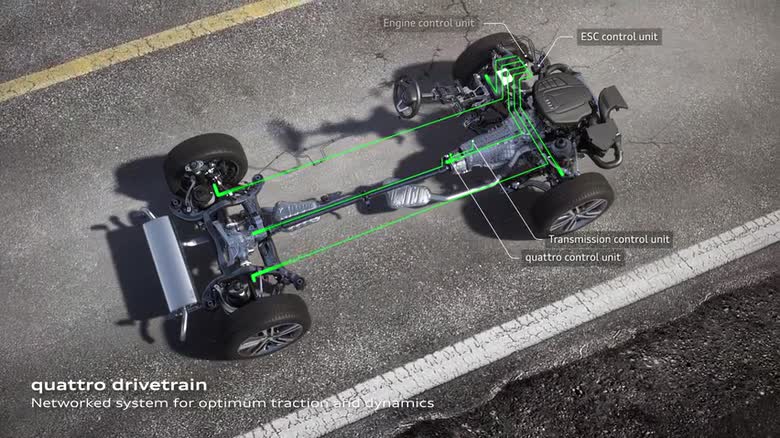
Audi Q5 – quattro with ultra-technology Audi Q5 – quattro with ultra-technology
Audi Q5 – quattro with ultra-technology
With the exception of the 3.0 TDI, all Q5 versions have the completely newly developed quattro with ultra technology. It offers maximum efficiency and does not perceptibly differ from permanent systems in terms of traction and driving dynamics.
- Available media:
-

-
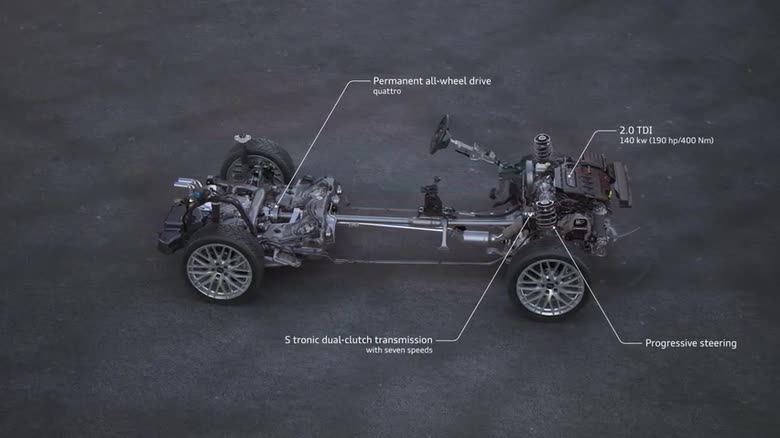
Audi Q2 – 2.0 TDI quattro S tronic Audi Q2 – 2.0 TDI quattro S tronic
Audi Q2 – 2.0 TDI quattro S tronic
The quattro permanent all-wheel drive system ensures optimal traction and handling under any road conditions. It comes standard with the 2.0 TFSI and the 2.0 TDI with an output of 140 kW (190 hp). It is optionally available for the 2.0 TDI with an output of 110 kW (150 hp).
- Available media:
-

-
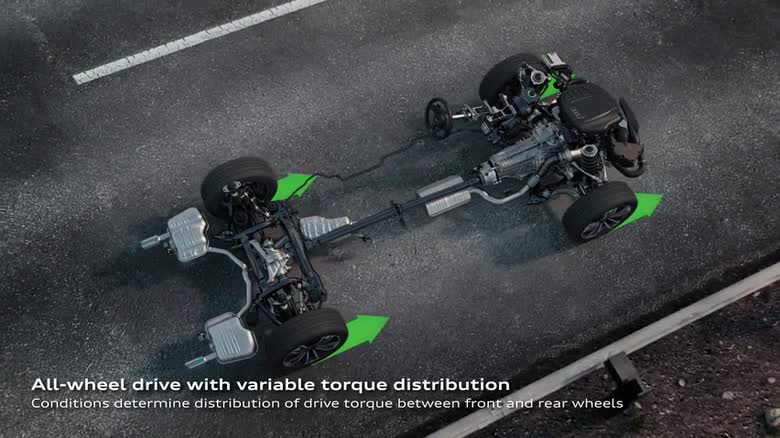
Audi quattro with ultra-technology Audi quattro with ultra-technology
Audi quattro with ultra-technology
With quattro permanent all-wheel drive, Audi has extended its lead over a period of more than three decades. Now it’s time for the next big step: quattro in combination with ultra technology.
The development goal of quattro with ultra technology is an all-wheel drive system optimized for efficiency with no discernible differences to permanent systems with respect to traction and driving dynamics. The system should set benchmarks in its class for fuel consumption and CO2 emissions, particularly under everyday conditions. With correspondingly equipped test vehicles, Audi developers used on average 0.3 liters/100 kilometers less fuel than with conventional all-wheel drive. The tests were conducted on a route throughout the Ingolstadt area and in normal traffic.
- Available media:
-

-
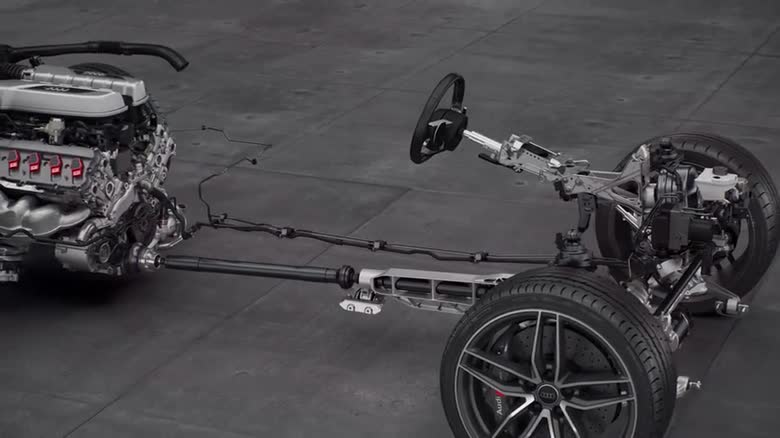
Audi R8 V10 Plus – Drivetrain The new quattro drive
The new quattro drive
In the powertrain, the lightning-quick shifts of the seven-speed S tronic dualclutch transmission, an optimized mechanical differential lock and a new electrohydraulically activated multi-plate clutch work together. The actively cooled allwheel drive system can distribute torque freely between the axles. The intelligent dynamic control system for the quattro drive is incorporated into the Audi drive select dynamic handling system that offers four basic modes.
In each mode, the new high-performance sports car expresses a different character – from relaxed freeway cruiser to race car on the circuit track. In the top R8 V10 plus model, a performance leather steering wheel is standard equipment. In its performance mode, it offers three additional modes: dry, wet and snow. They make handling even more precise and sharper, tuned to the friction coefficient of the specific road surface. The new technology is also available on the R8 V10, including the steering wheel that is used to select the special modes.
- Available media:
-

-
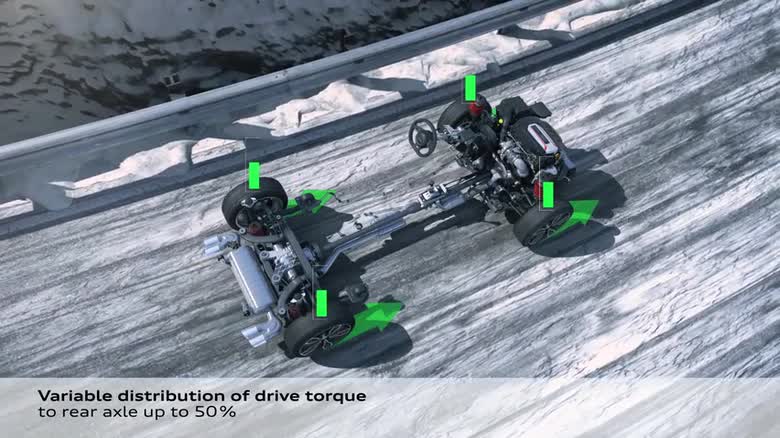
S1 quattro Electronically controlled multi-plate clutch
Electronically controlled multi-plate clutch
Like all Audi S models the Audi S1 and the S1 Sportback (7.0 / 7.1 liters of fuel per 100 kilometers [33.60 / 33.13 US mpg]; 162 / 166 grams of CO2 per kilometer [260.71 / 267.15 g/mile]) come with permanent all-wheel drive – another USP in this segment. Weight distribution constraints mean the hydraulic multi-plate clutch is mounted on the rear axle (axle load distribution: front 60 percent, rear 40 percent). Depending on the driving situation, the electronically controlled clutch distributes the drive torque between the axles. If one of the axles starts to slip, the torque is instantly redirected to the other axle. The management of the multi-plate clutch is decidedly dynamic. It allows controlled drifts on a road surface with a low coefficient of friction in sport mode or with deactivated ESC.
- Available media:
-

-
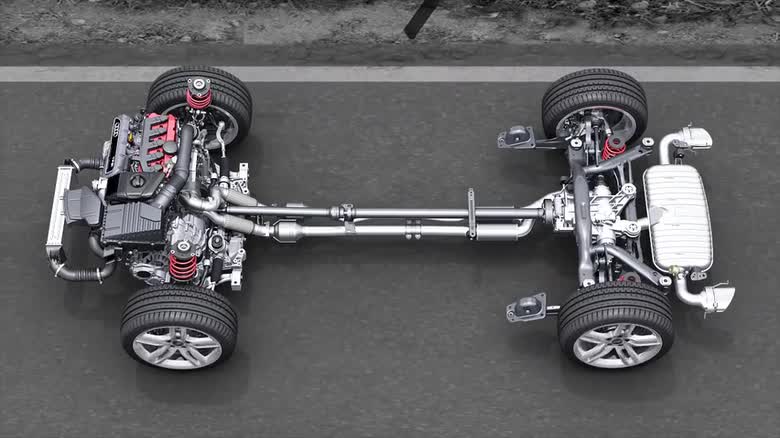
Hydraulic multi-plate clutch Hydraulic multi-plate clutch
Hydraulic multi-plate clutch
The Torsen differential is an excellent solution for a longitudinal engine and a drivetrain that runs in a straight line to the back. Audi chose an entirely different technology for the transverse-mounted engines in the compact models – an electronically controlled and hydraulically actuated multi-plate clutch. It first appeared in 1998 in the TT quattro and the A3 quattro.
- Available media:
-


-
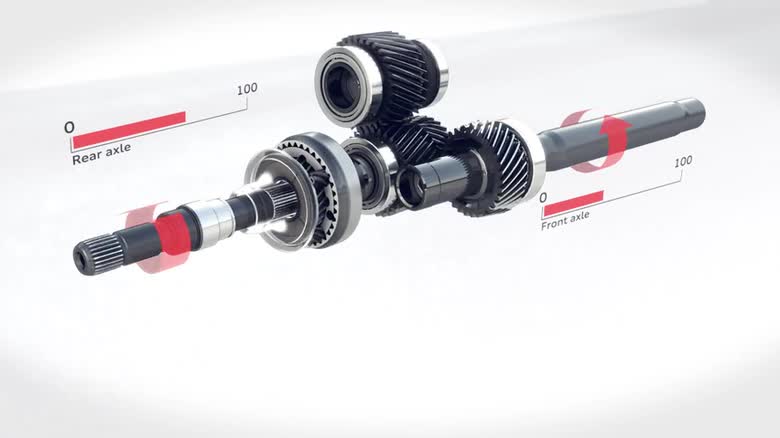
Audi RS7 Self-locking center differential Self-locking center differential
Self-locking center differential
In 2005, Audi set off the next stage in the evolution of its classic quattro drive system in the second-generation RS 4. The new self-locking center differential, which is used in many models today, remained true to the principle of mechanical function, yet represented significant progress over the Torsen differential.
- Available media:
-


-
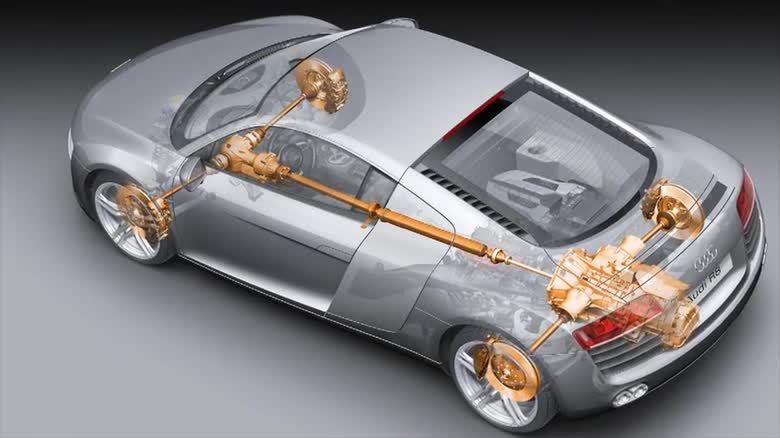
Viscous coupling Viscous coupling
Viscous coupling
The Audi R8 high-performance sports car occupies a special position in the Audi model range – and this extends to its packaging and its drive system. The mid-mounted engine is arranged longitudinally at the rear of the car in front of the rear axle, with the gearbox right behind it. It also includes an auxiliary drive for a prop shaft running past the engine on the side and up to the front axle.
- Available media:
-


-
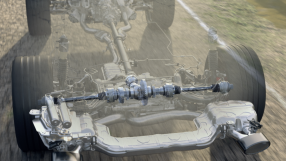
Sport differential function Sport differential
Sport differential
The self-locking center differential in the classic quattro drivetrain does an excellent job of distributing the power between the axles. To make driving even more dynamic, Audi introduced an additional component in the dynamic S4 Sedan in late 2008 that actively splits the torque between the wheels of the rear axle – the sport differential.
- Available media:
-


-
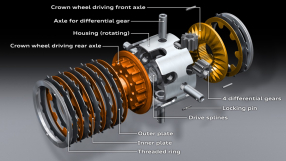
Crown gear differential
Crown gear differential
Exactly 30 years after the debut of the first quattro, Audi introduced the latest evolutionary stage of its permanent all-wheel drive system for longitudinal front-mounted engines – quattro drive with crown gear differential and torque vectoring.
- Available media:
-

-
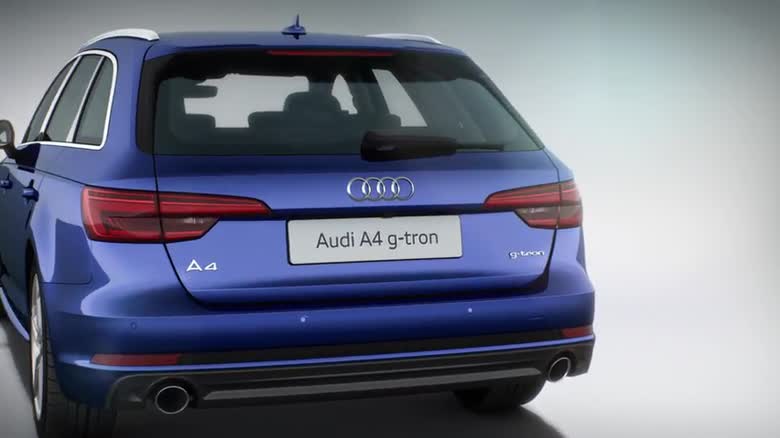
Audi A4 Avant g-tron Audi A4 Avant g-tron
Audi A4 Avant g-tron
The Audi A4 Avant g-tron* is the second model after the A3 Sportback g-tron* that customers can run on compressed natural gas (CNG) or Audi e-gas. Its 2.0 TFSI engines has an output of 125 kW (170 hp) and torque of 270 Nm (199.1 lb-ft).
- Available media:
-


-
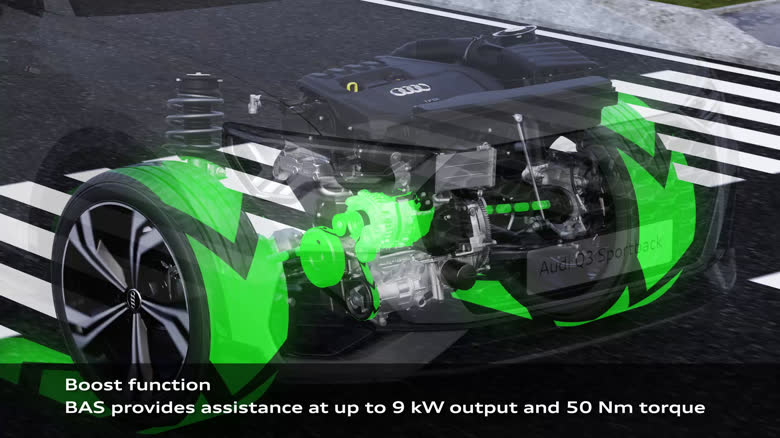
Audi Q3 Sportback – 48V MHEV -
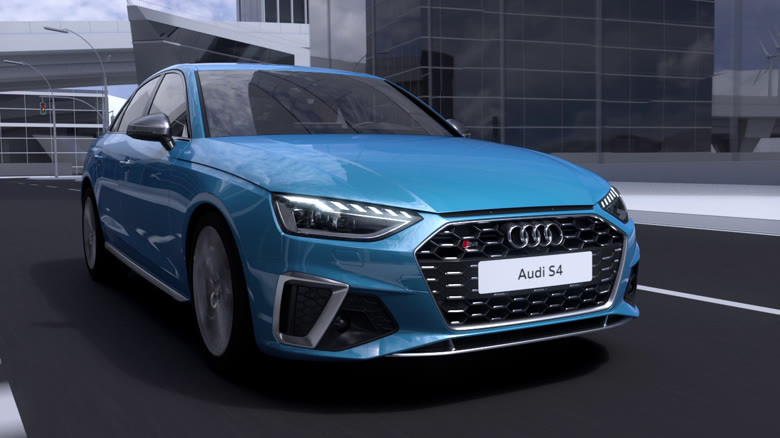
Audi S4 TDI with 48V MHEV Audi S4 TDI with 48 Volt Mild-Hybrid-System
Audi S4 TDI with 48 Volt Mild-Hybrid-System
Both S models of the A4 family – the Audi S4 Sedan TDI (combined fuel consumption
6.3 – 6.2 l/100 km (37.3 - 37.9 US mpg)*; combined CO2 emissions 164 – 163 g/km (263.9 - 262.3 g/mi)* and the S4 Avant TDI (combined fuel consumption 6.3 l/100 km (37.3 US mpg)*; combined CO2 emissions 166 – 165 g/km (267.2 - 265.5 g/mi)* – are now equipped with a V6 diesel engine as a power package.- Available media:
-

-
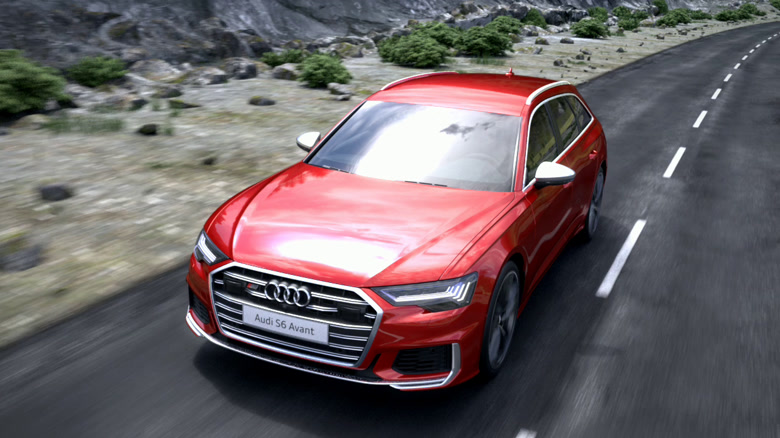
Audi S6 Avant TDI – Drivetrain Audi S6 Avant and S7 with 3.0 V6 TDI
Audi S6 Avant and S7 with 3.0 V6 TDI
This takes the three-liter V6 TDI’s total power output to 257 kW (349 hp). Power transmission is handled by the eight-speed tiptronic automatic transmission, which always operates in tandem with quattro permanent all-wheel drive.
- Available media:
-

-
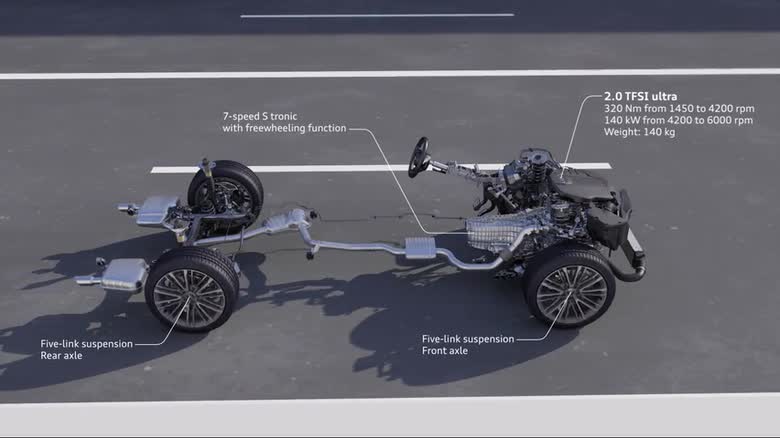
Audi A4 2.0 TFSI ultra Audi A4 – 2.0 TFSI ultra
Audi A4 – 2.0 TFSI ultra
The 2.0 TFSI with a displacement of 1,984 cc is available in the new the Audi A4 ultra and A4 Avant ultra. Its technical refinements are the exhaust manifold integrated into the cylinder head, the rotary-valve model for thermal management, the Audi valve-lift system (AVS) for the intake valves, the electric wastegate of the turbocharger and the dual fuel injection. In partial load, indirect injection in the inlet manifold supplements the FSI direct injection. ection.
- Available media:
-

-
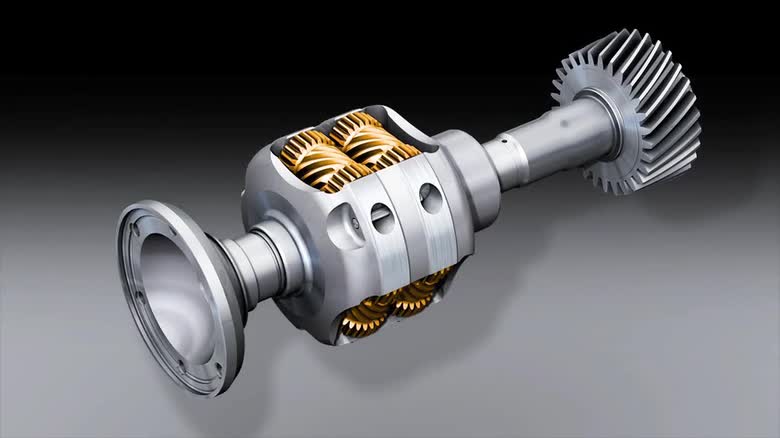
Torsen differential Torsen differential
Torsen differential
With the debut of the Audi 80 quattro in fall 1986, Audi introduced a new center differential – a component that was still strictly mechanical, but highly efficient. The name Torsen was a contraction of the words “torque” and “sensing.” The Torsen differential had already proved itself in the world of technology as a high-tech rear axle differential; Audi developed it further for use as a center differential.
- Available media:
-


-
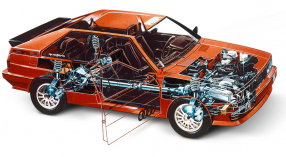
Bevel gear center differential
Bevel gear center differential
The first Audi quattro, which debuted in spring 1980, was a technical sensation. Its permanent all-wheel drive was lightweight, compact and fast-running, thus making it suitable for high speeds. The elegant quattro principle did not need the heavy, separate transfer case and weighty auxiliary shaft to the front axle that were the standard at the time. It was the first volume-built permanent all-wheel drive system suitable for fast and sporty cars.
- Available media:
-

-
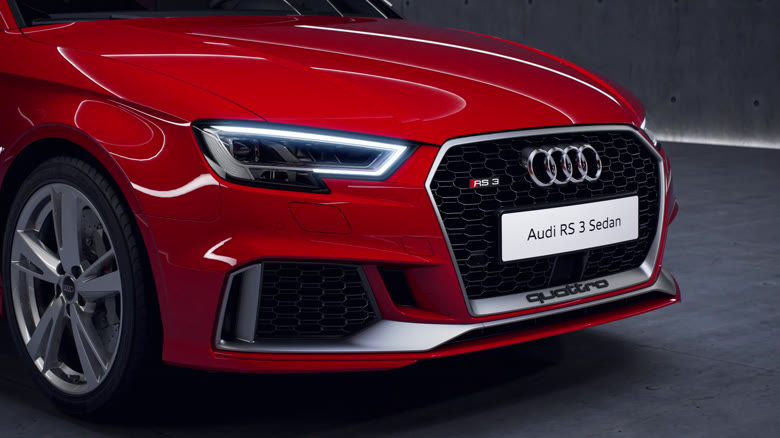
Audi RS 3 Sedan Audi RS 3 Sedan
Audi RS 3 Sedan
Since 2010, the 2.5 TFSI has been voted “International Engine of the Year” in its class for seven consecutive years. Now, Audi presents a new version of the successful power unit. The turbo engine which drives the new RS 3 Sedan* and the facelifted RS 3 Sportback* is the most powerful series-production five-cylinder engine on the world market.
- Available media:
-

-
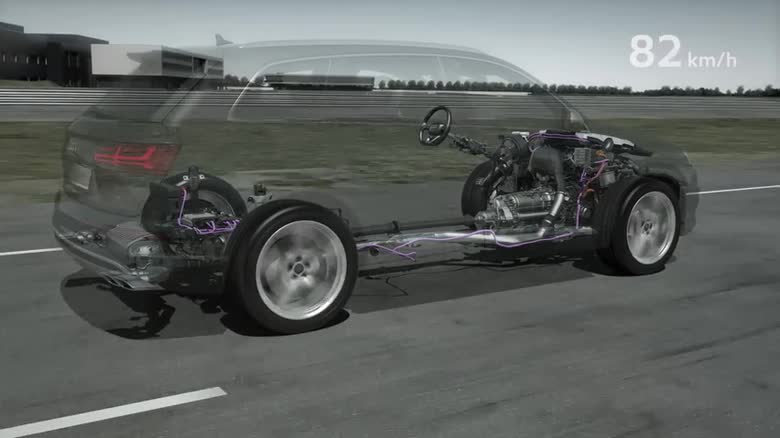
Audi SQ7 TDI – V8 TDI with electric powered compressor and 48 volt electrical subsystem Audi SQ7 TDI – V8 TDI with electric powered compressor and 48 volt electrical subsystem
Audi SQ7 TDI – V8 TDI with electric powered compressor and 48 volt electrical subsystem
The 4.0 TDI has been newly developed from the ground up. It combines best-in-class performance with low consumption and guarantees maximum dynamics. The V8 engine has a displacement of 3,956 cc. The two exhaust-gas turbochargers are activated selectively according to the concept of sequential charging, since exhaust gas only flows through one turbocharger at low and intermediate load. The second turbine is only activated at higher loads. An electric powered compressor (EPC) augments the work of the two turbochargers, particularly in the lower engine speed range, providing for extremely dynamic off-the-line performance.
- Available media:
-

-
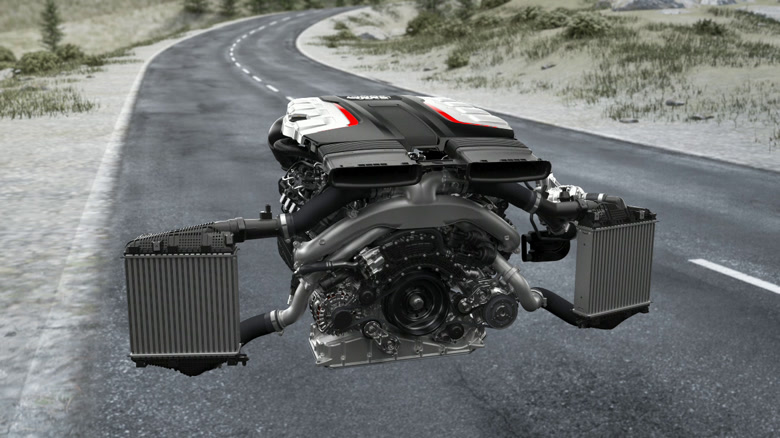
Audi SQ8 – Mild hybrid system with electric powered compressor (EPC) Audi SQ8 – Mild hybrid system with electric powered compressor (EPC)
Audi SQ8 – Mild hybrid system with electric powered compressor (EPC)
An electric powered compressor (EPC) in Audi SQ8 TDI supplements the work of the two turbochargers when starting off and when accelerating at a low engine speed, allowing the V8 TDI to always build up its power spontaneously.
- Available media:
-

-
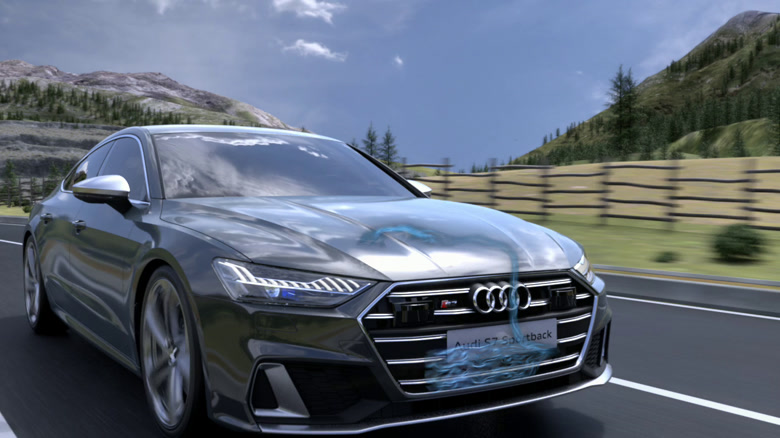
Audi S7 – electrically empowered compressor Audi S6 and S7 as TDI with electrically empowered compressor
Audi S6 and S7 as TDI with electrically empowered compressor
Sportiness meets efficiency – the new Audi S6 and S7 models make their entrance with a torquey V6 TDI engine, offering customers in Europe the ideal performance models for the long haul.
- Available media:
-

-
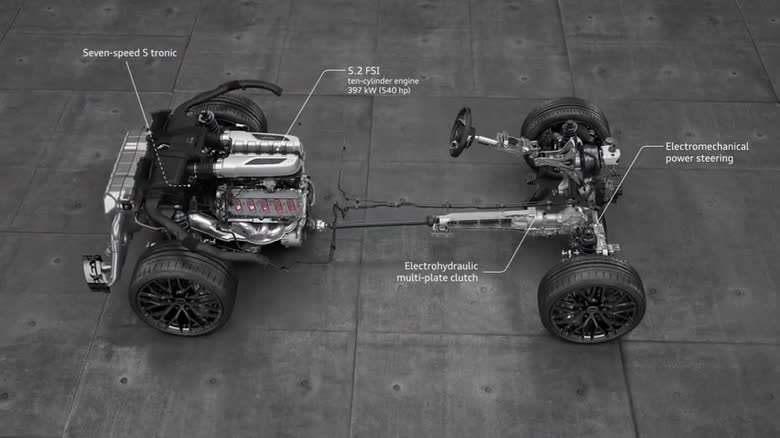
Audi R8 Spyder V10 - drivetrain Audi R8 Spyder V10 – Drivetrain
Audi R8 Spyder V10 – Drivetrain
From 0 to 100 km/h (62.1 mph) in 3.6 seconds, 11.8 seconds for the sprint from 0 to 200 km/h (124.3 mph) and a top speed of 318 km/h (197.6 mph) sum up the dynamic performance of the new Audi R8 Spyder*. It sprints to 100 km/h (62.1 mph) two-tenths of a second faster than its predecessor, reaches the 200 km/h (124.3 mph) mark six-tenths of a second sooner and delivers 7 km/h (4.3 mph) more top speed.
- Available media:
-

-
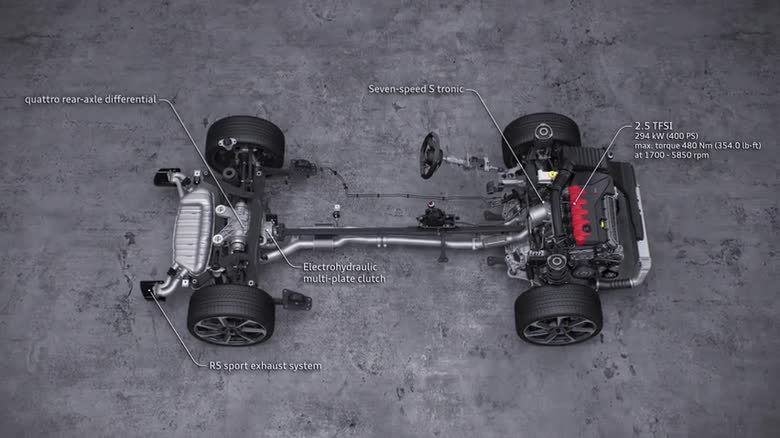
Audi TT RS Coupé and Roadster – 2.5 TFSI, powertrain Audi TT RS Coupé and Roadster – 2.5 TFSI, powertrain
Audi TT RS Coupé and Roadster – 2.5 TFSI, powertrain
The five-cylinder achieves a good 17 percent more output from the unchanged displacement of 2,480 cc – 294 kW (400 hp) means a specific value of 161.3 hp per liter. The maximum torque of 480 Nm (354.0 lb-ft) is available from 1,700 rpm and remains constant up to 5,850 rpm. The new Audi TT RS Coupé thus accelerates from 0 to 100 km/h (62.1 mph) in 3.7 seconds; the Roadster takes 3.9 seconds. Standard top speed is a governed 250 km/h (155.3 mph). Audi will raise the top speed to 280 km/h (174.0 mph) upon request.
- Available media:
-

-
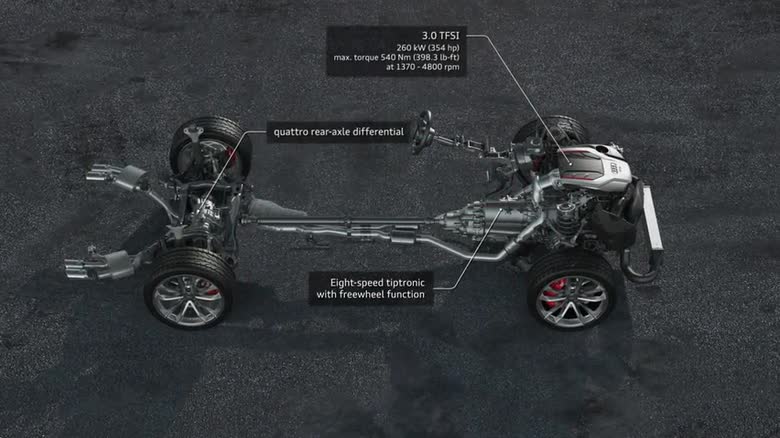
Audi S5 Coupé – 3.0 TFSI, drive train Audi S5 Coupé – 3.0 TFSI
Audi S5 Coupé – 3.0 TFSI
The completely redesigned, turbocharged 3.0 TFSI engine for the Audi S5 Coupé offers powerful performance: high power, ample torque, spontaneous response and a sonorous sound. All of that paired with a new level of efficiency.
- Available media:
-

-
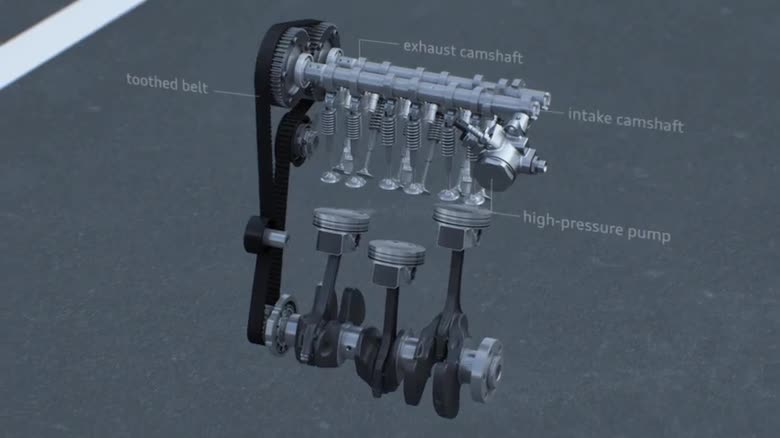
Audi A1 Sportback Audi A1 Sportback
Audi A1 Sportback
A clear sign of the popularity of the Audi A1* and A1 Sportback* is the over 500,000 cars sold since its market launch in 2010. Six engines – gasoline and diesel – are new or have been intensively further developed. For the first time, Audi is offering completely new three-cylinder engines, the 1.0 TFSI and the 1.4 TDI – they are efficient without neglecting driving fun.
- Available media:
-

-
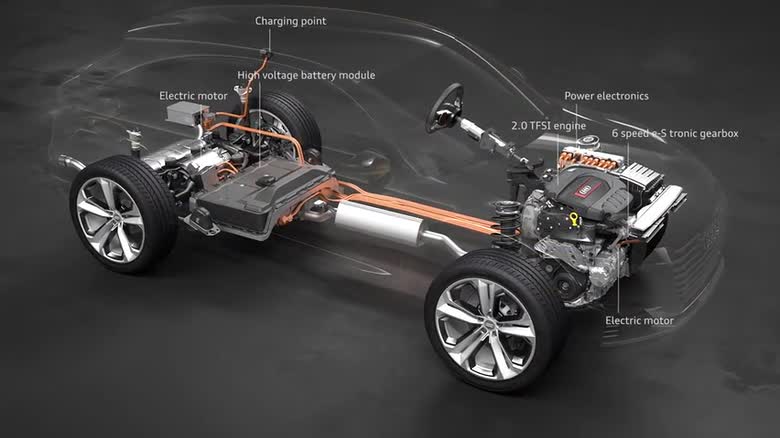
Inductive charging in showcar Audi TT offroad concept Inductive charging in show car Audi TT offroad concept
Inductive charging in show car Audi TT offroad concept
The plug‑in hybrid drive in the Audi TT offroad concept delivers 300 kW (408 hp) of system output and 650 Nm (479.2 lb‑ft) of system torque. The show car accelerates from 0 to 100 km/h (62.1 mph) in 5.2 seconds and reaches the electronically governed top speed of 250 km/h (155.3 mph) without any trouble. It consumes just 1.9 liters of fuel per 100 kilometers (123.8 US mpg), a CO2 equivalent of 45 grams per kilometer (72.4 g/mile).**
- Available media:
-

-
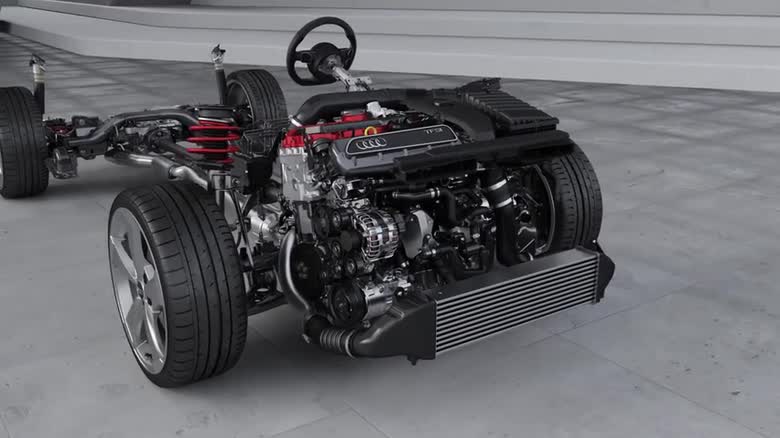
Audi RS 3 Sportback 2.5 TFSI 2.5 TFSI
2.5 TFSI
The multiple award-winning 2.5 TFSI produces 270 kW (367 hp) and 465 Nm (343.0 lb‑ft) of torque in the new RS 3 Sportback. The turbocharged engine accelerates the compact five‑door from 0 to 100 km/h in 4.3 seconds, and top speed can be increased to 280 km/h (174.0 mph) upon request. In the NEDC, it consumes just 8.1 liters of fuel per 100 kilometers (29.0 US mpg), with CO2 emissions of 189 grams per kilometer (304.2 g/mi).
- Available media:
-


-
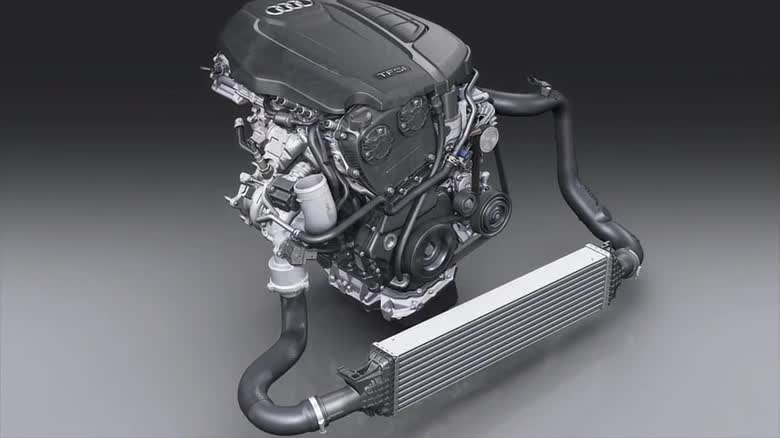
1.8 TFSI 1.8 TFSI
1.8 TFSI
A central innovation in the 1.8 TFSI is the addition of indirect fuel injection. Indirect injection supplements FSI direct fuel injection in the part-load range. This lowers fuel consumption and reduces particulate emissions to within the limits of the future Euro 6 standard. FSI fuel injection is active when starting and at higher loads. The valve control system has been given greater operating freedom. The Audi valvelift system, which adjusts the lift of the valves as needed, is active on the exhaust side; the camshafts can also be adjusted.
- Available media:
-

-
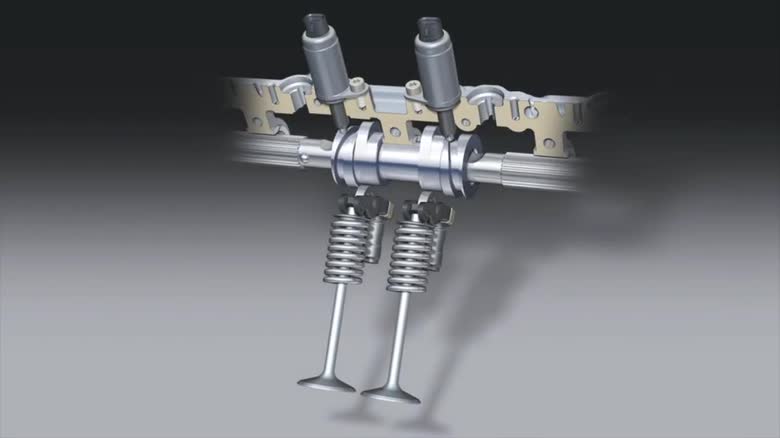
Aud valvelift system Audi valvelift system
Audi valvelift system
The Audi valvelift system, one of the major innovations of the brand with the four rings, regulates the lift of the valves in two stages depending on load and engine speed. The system thus increases torque while also reducing fuel consumption.
- Available media:
-


-
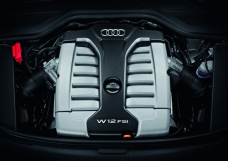
W12
W12
In the A8 L, Audi’s top-of-the-line model, a twelve-cylinder powerplant provides outstanding propulsion. The “W12” abbreviation alludes to the unusual configuration of the 6.3-liter FSI engine: four rows consisting of three cylinders each. Two rows in each case face each other in an offset configuration at a 15-degree angle, collectively forming a single broad bank. Both cylinder banks thus form a 72-degree V configuration.
- Available media:
-

-
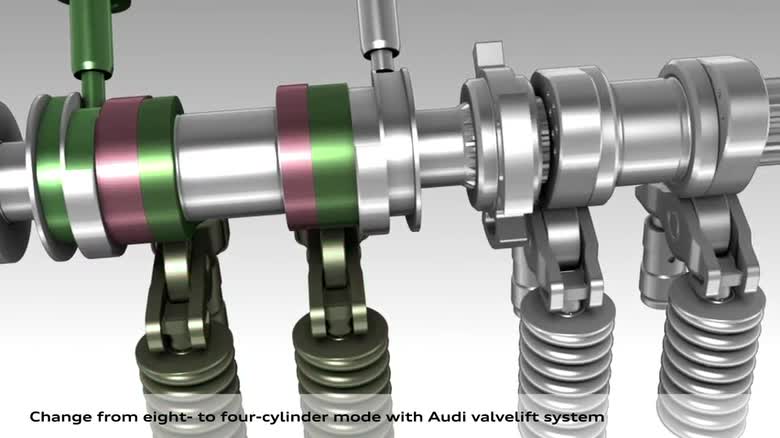
cylinder on demand 4.0 TFSI engine with cylinder on demand
4.0 TFSI engine with cylinder on demand
The new 4.0 TFSI, a powerful V8 with twin turbochargers, is equipped with “cylinder on demand” technology. When operating at part load, four of its cylinders are deactivated. This reduces fuel consumption by an average of five percent. To complement this system there are two further technologies: Active noise control (ANC) and active engine mounts. They ensure that the car’s occupants do not hear or sense any disturbing noise or vibration even if the engine is operating in the four-cylinder mode.
- Available media:
-

-
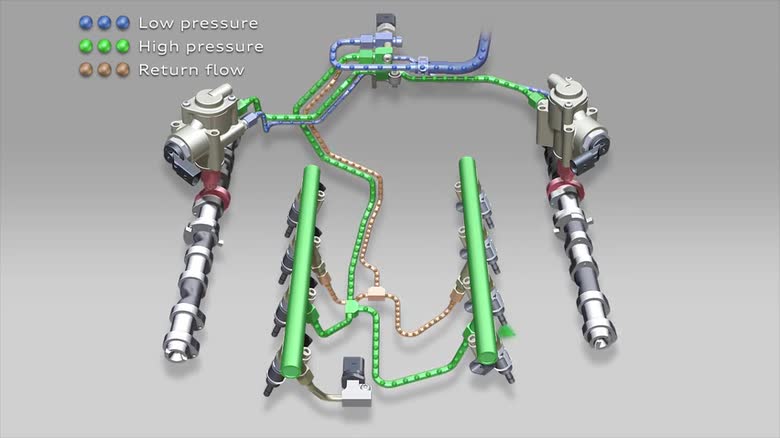
FSI common rail FSI/TFSI principle
FSI/TFSI principle
At Audi, FSI stands for gasoline direct injection, a technology in which fuel is injected directly into the combustion chambers, rather than into the intake manifold in the traditional manner. More favorable in terms of thermodynamics, this method improves the efficiency of the engine. FSI engines achieve higher performance and better dynamics than conventional engines, with better efficiency. Whether they have four, five, six, eight, ten or twelve cylinders, all gasoline engines from Audi today employ the FSI principle.
- Available media:
-


-
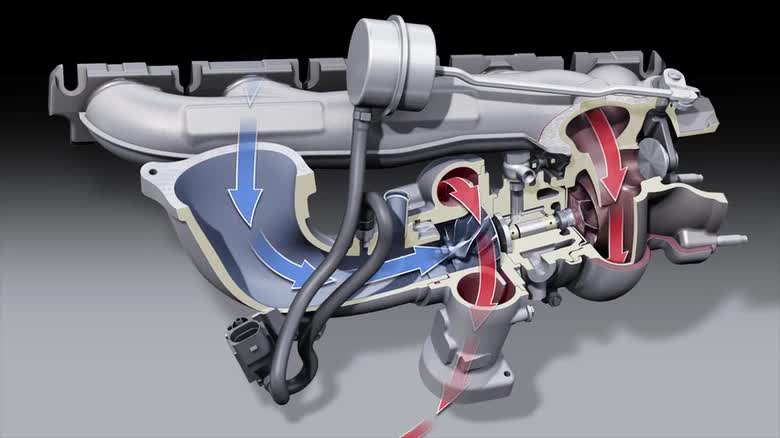
Exhaust turbocharger Exhaust turbocharger
Exhaust turbocharger
Downsizing has a long legacy at Audi – the first turbocharged gasoline engine, a five-cylinder unit, was produced as early as the late 1970s. Today the brand uses a turbocharger on all its four- and five-cylinder engines, both TDI and TFSI units, to increase performance and torque. Certain large V-engines employ two chargers according to the bi-turbo principle.
- Available media:
-

-
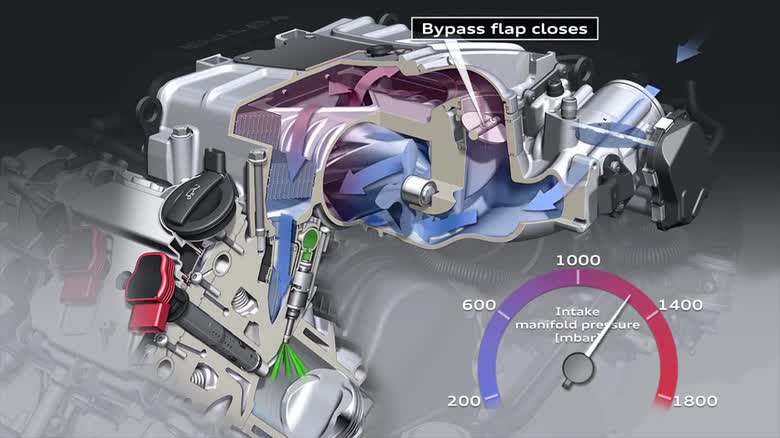
Supercharger Supercharger
Supercharger
Alongside exhaust gas turbochargers, Audi also makes use of superchargers to boost its engines. A supercharger is used in the 3.0 TFSI. The high-efficiency mechanical charger is situated in the 90-degree V formed by the cylinder banks and is driven by the engine via a poly-V belt. The gas pathways downstream of the charger are very short, thus the torque develops quickly and easily. The full boost is available even at idle.
- Available media:
-


-
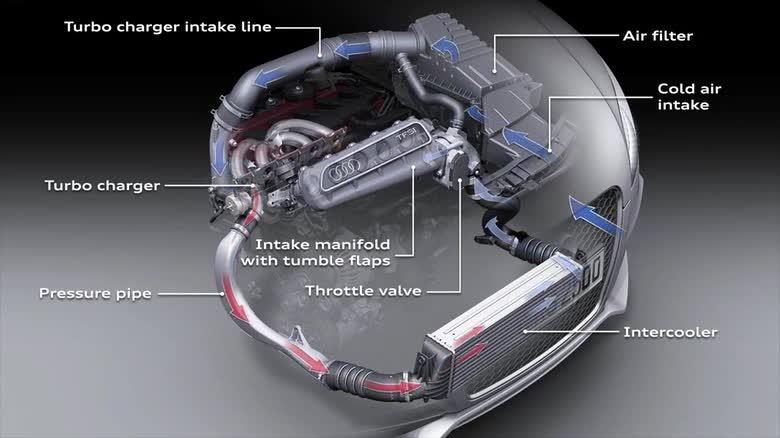
Intercooler Charge-air cooler
Charge-air cooler
As a turbocharger compresses the intake air, it heats up, reaching temperatures between 120 and 150 degrees Celsius (between 248 and 302 degrees Fahrenheit). Hot air has a lower density, however, and thus contains less oxygen for combustion. A charge-air cooler is therefore placed downstream of the turbocharger to cool the compressed air before it enters the combustion chamber.
- Available media:
-


-
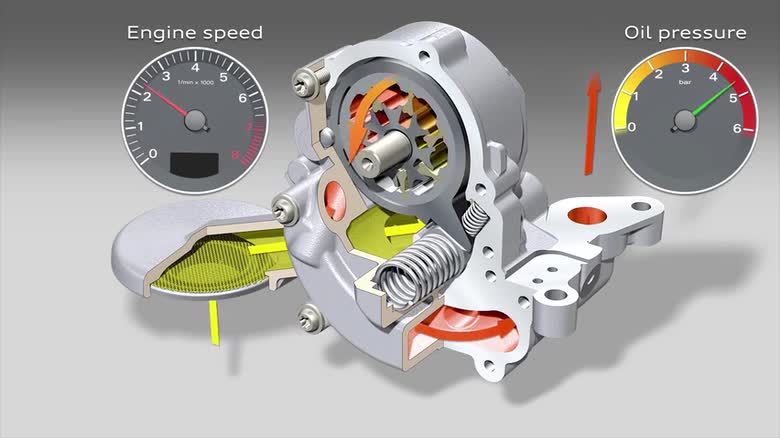
Delivery-on-demand oil pump Demand-controlled oil pump
Demand-controlled
oil pumpThe engine ancillaries offer tremendous potential for efficiency. A new generation of oil pumps, which Audi employs in a number of models, are an important component. Smaller in terms of delivery rate, these volumetric-flow-controlled oil pumps operate only as required, and no longer need to circulate oil continuously.
- Available media:
-


-
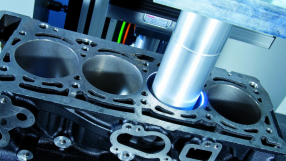
Internal friction
Internal friction
Combustion engines are subject to friction losses, in which a portion of the power disappears in the mechanical interaction of the engine components. The greatest losses occur in the crankshaft – at the pistons with their sealing rings, at the connecting rod bearings and at the main bearings of the crankshaft.
- Available media:
-

-
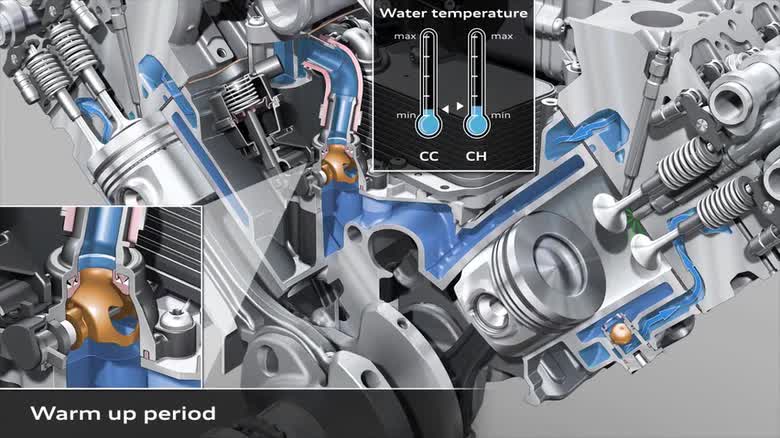
Thermal management Innovative thermal management
Innovative thermal management
The novel thermal management system, an innovation from Audi in many engines, lowers fuel consumption by up to 3 percent. Rather than being circulated, the coolant remains still during the warm-up phase so that the engine oil quickly reaches its operating temperature of between 80 and 120 degrees Celsius (between 176 and 248 degrees Fahrenheit). This significantly shortens the phase of greater frictional resistance due to viscous oil in the crankshaft drive and valve gear.
- Available media:
-

-
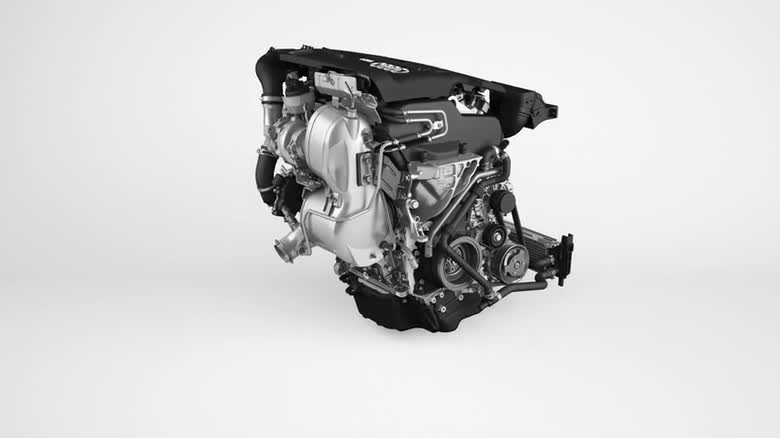
1.4 TDI 2014 1.4 TDI 2014
1.4 TDI 2014
The new 1.4 TDI follows the two-liter four-cylinder engine as the second engine in the Volkswagen Group’s modular diesel engine platform (MDB). The three-cylinder unit is designed as a transverse engine and will enter volume production shortly. It has a displacement of 1,422 cc. The stroke of 95.5 millimeters (3.8 in) is taken from the 2.0 TDI; the bore has been reduced from 81.0 to 79.5 millimeters (3.2 to 3.1 in). Cylinder spacing is 88.0 millimeters (3.5 in).
- Available media:
-

-
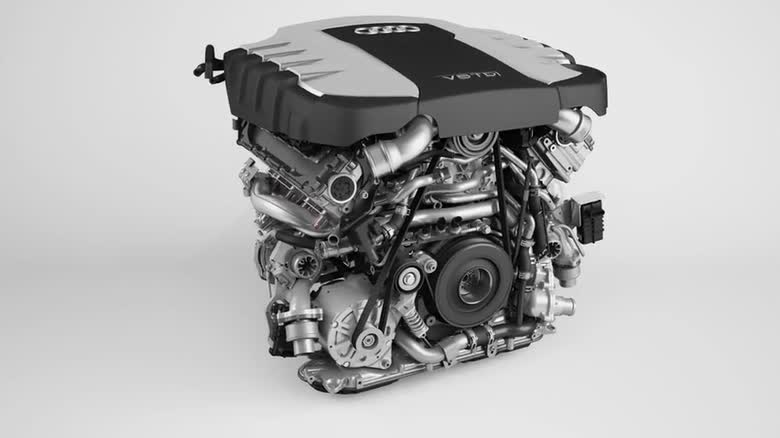
V8 4.2 TDI 2014 V8 4.2 TDI 2014
V8 4.2 TDI 2014
The 4.2 TDI has more torque than any other engine in the Audi lineup. The latest version in the Audi A8 delivers 850 Nm (626.9 lb-ft) between 2,000 and 2,750 revolutions per minute. Its peak output of 283 kW (385 hp) is available at just 3,750 rpm.
- Available media:
-

-
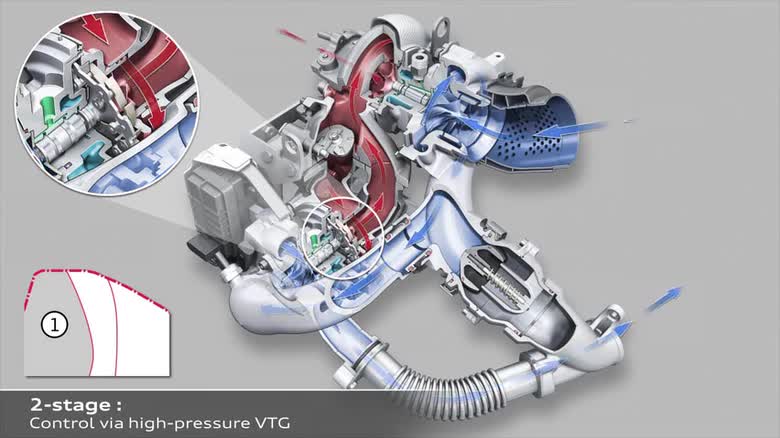
3.0 TDi Biturbo ENG 3.0 TDI Biturbo
3.0 TDI Biturbo
The top version of the 3.0 TDI is a high-performance diesel engine, with which Audi is setting new standards for performance and efficiency. The twin-turbo design features two turbochargers connected in series that both provide thrust.
- Available media:
-

-
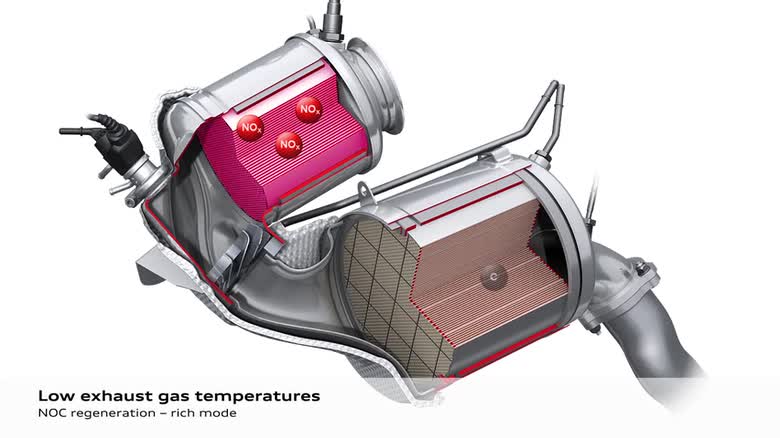
Emissions controls Emissions controls
Emissions controls
In the past, the developers had to design emissions-control components for early response. As the efficiency of the TDI engines increases, exhaust gas temperatures are steadily falling. In the ECE cycle, temperatures measured downstream of the oxidation catalytic converter take 2.5 minutes to reach 150 degrees Celsius. Conversion does not take place below this threshold.
- Available media:
-

-
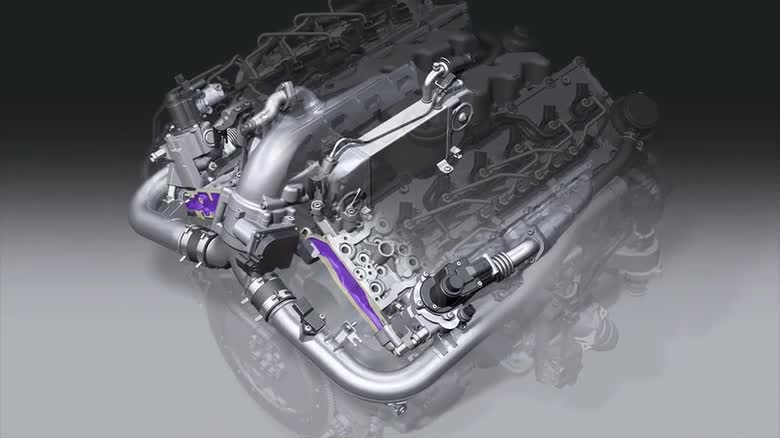
Abgasrückführung ENG Exhaust gas recirculation
Exhaust gas recirculation
In all internal combustion engines, undesirable nitrogen oxides are formed when combustion takes place at high temperatures with excess air. These gases can be largely avoided, however, through the use of exhaust gas recirculation (EGR).
- Available media:
-


-
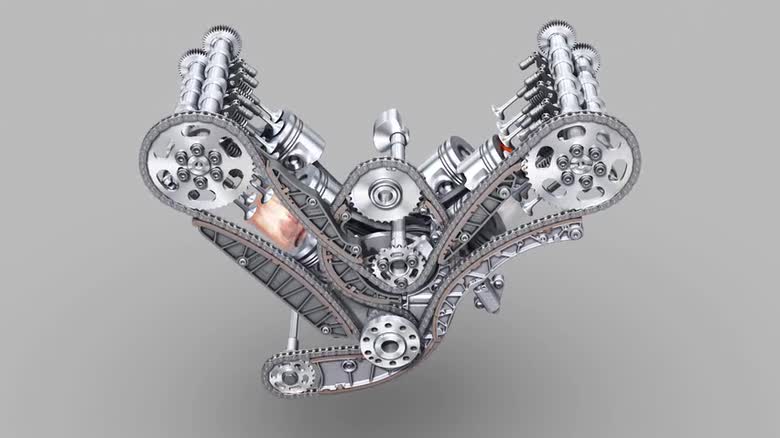
Chain Drive Balance shafts
Balance shafts
In every reciprocating engine, inertial forces and moments of inertia develop due to the oscillating motion of the pistons and connecting rods and the transmission behavior of the crankshaft drive. In some engine configurations, such as the V12 with 60 degrees of crankshaft rotation, these forces balance one another out and thus have no effect on normal driving. In an inline four-cylinder engine, however, free second-order forces of inertia detract from engine smoothness.
- Available media:
-


-
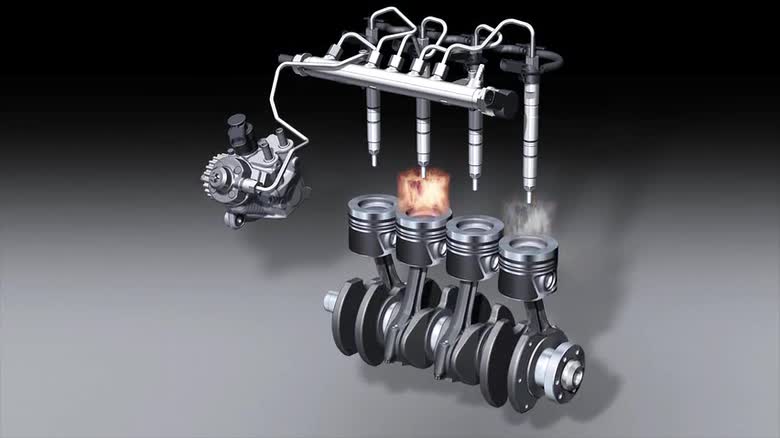
Common rail four-cylinder Common rail
Common rail
For engine design engineers, the “rail” in a common rail system is a tubular high-pressure accumulator that maintains a supply of fuel at a constant high pressure. The rail is fed by a pump driven by the timing gear. The injectors are connected to the common rail by short steel pipes, and opened and closed by electrical impulses.
- Available media:
-


-
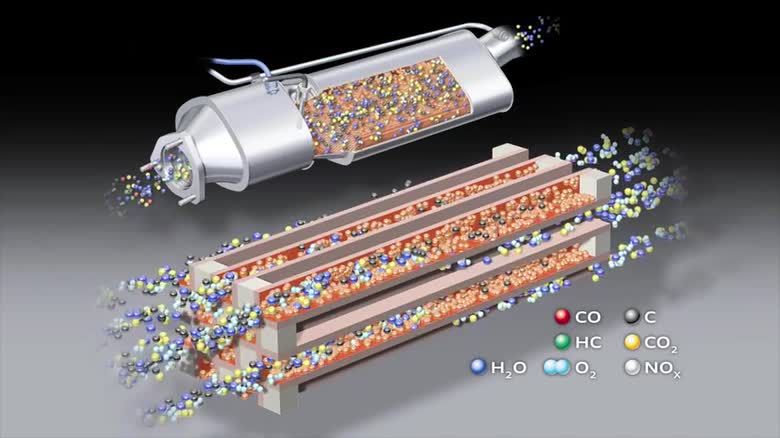
Diesel particulate filter Diesel particulate filter
Diesel particulate filter
When diesel oil is burned in an engine, soot particles are formed in the combustion chamber in certain operating areas. To eliminate these particles, Audi uses diesel particulate filters – closed-circuit systems with an efficiency of more than 95 percent.
- Available media:
-


-
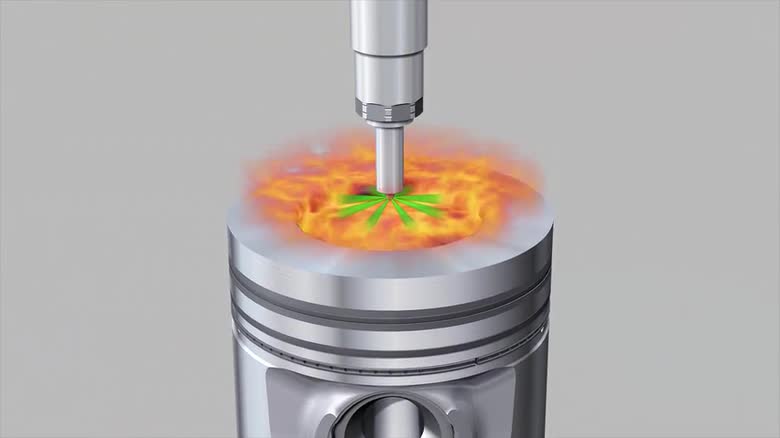
Fuel-injection prozess Multi-hole nozzles
Multi-hole nozzles
Audi common rail systems are components of fascinating precision that inject tiny amounts of fuel into the combustion chambers. The fuel is released from the nozzles at pressures of up to 2,000 bar (29,008 psi) and at several times the speed of sound. In some engines, Audi uses piezo injectors with eight-hole nozzles, with each hole only 0.12 millimeters (0.0047 in) in diameter.
- Available media:
-


-
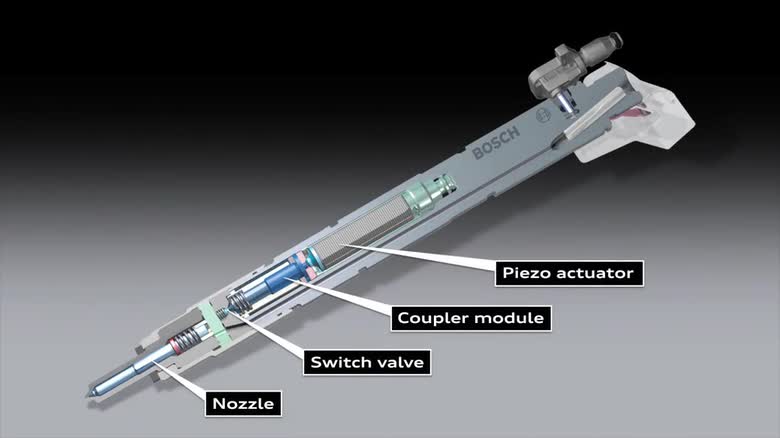
piezo injectors Piezo injectors
Piezo injectors
The piezo principle is an ideal complement for common rail fuel injection. Piezo crystals change their structure in a few thousandths of a second by expanding slightly when an electrical voltage is applied to them. Several hundred piezo wafers are stacked one above the other in the injector. As this stack expands, linear movement takes place and is transmitted directly to the injector needle, with no mechanical linkage in between.
- Available media:
-

-
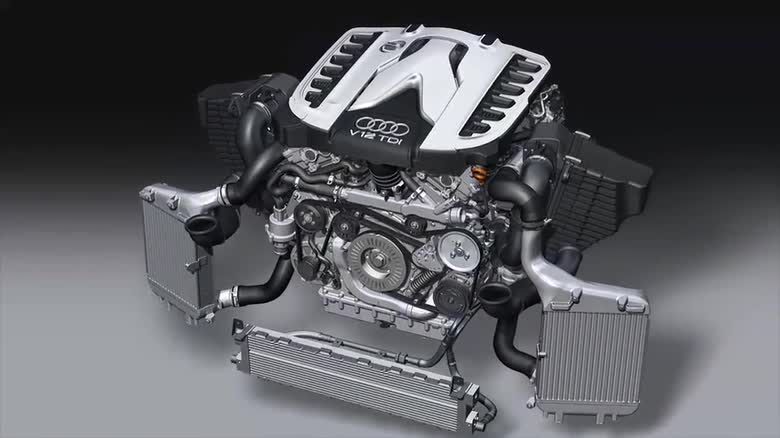
V12 TDI TDI principle
TDI principle
The TDI used in production passenger cars is one of Audi’s groundbreaking innovations. Development of the engine began in the late 1970s, headed by the then Member of the Board of Management for Technical Development Dr. Ferdinand Piëch. In 1989, the direct-injection turbocharged diesel engine with fully electronic control celebrated its premiere in the Audi 100. The 2.5-liter five-cylinder engine set new standards with a power output of 88 kW (120 hp), a peak torque of 265 Nm (195.45 lb-ft) and excellent fuel efficiency. Far superior to all earlier engine concepts, it marked the beginning of a veritable boom in the new technology.
- Available media:
-


-
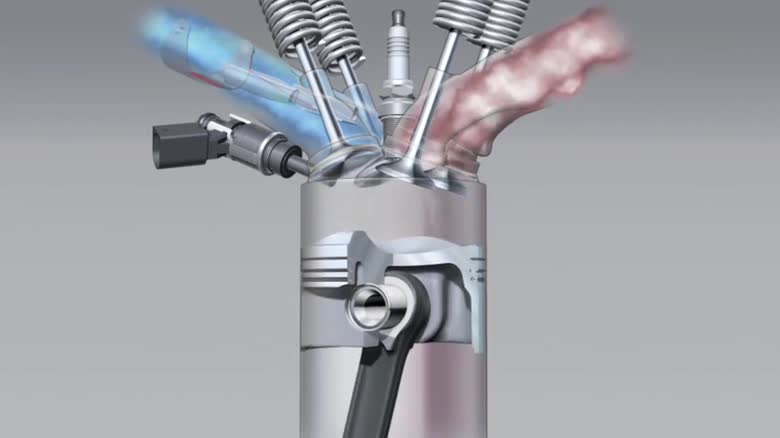
Tumble flaps Tumble flaps
Tumble flaps
In many Audi engines, both TDI and gasoline models, switchable swirl and tumble flaps are housed in the intake area. These flaps allow the intake air to be perfectly modulated for specific loads and engine speeds. This creates a swirling motion that improves the air-fuel mixture and enhances power and torque, while at the same time lowering fuel consumption and decreasing emissions. The flaps are driven with either electric or pneumatic power, depending on their design.
- Available media:
-

-
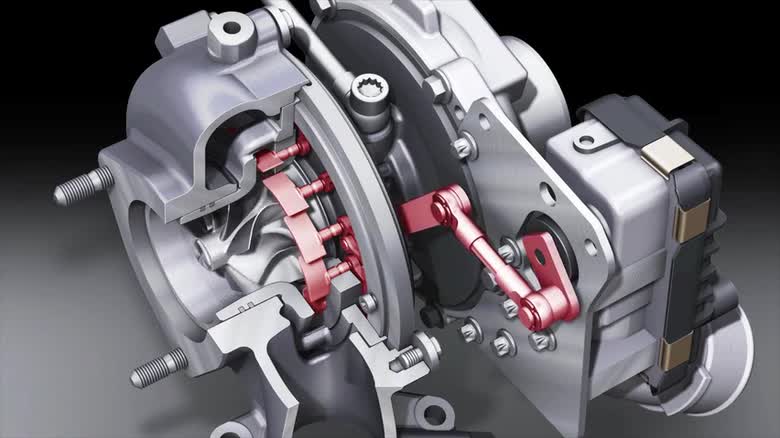
Turbocharger with variable turbine geometry (VTG) Turbochargers with variable turbine geometry (VTG)
Turbochargers with variable turbine geometry (VTG)
In all TDI engines from Audi, the turbochargers have variable turbine geometry on the exhaust side. Variable turbine geometry (VTG) technology builds up torque smoothly and without delay, even at low engine speeds.
- Available media:
-


-
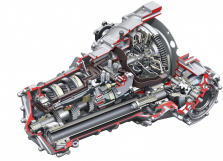
Manual transmissions
Manual transmissions
Found in much of the Audi model line-up – from the compact A1 to the R8 – manual transmissions are suited for pairing with front-wheel drive and quattro drive. While most manual transmissions operate with six gears, some use five gears.
- Available media:
-

-
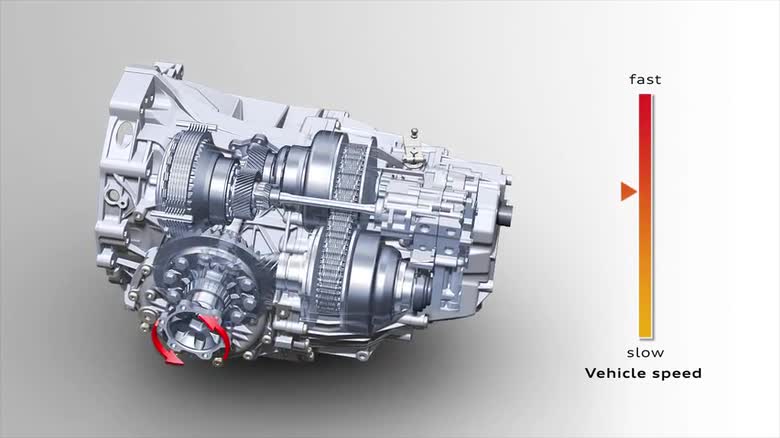
multitronic multitronic
multitronic
The continuously variable multitronic is an option for many Audi models with a longitudinal engine and front-wheel drive. Like all transmissions from Audi, it offers outstanding features such as low internal friction, a wide gear-ratio spread and high efficiency. The smooth multitronic nearly always allows the engine to operate in its optimal efficiency range. For dynamic drivers, it offers a sport program with closer gear ratios and a manual mode with eight stepped gears.
- Available media:
-


-
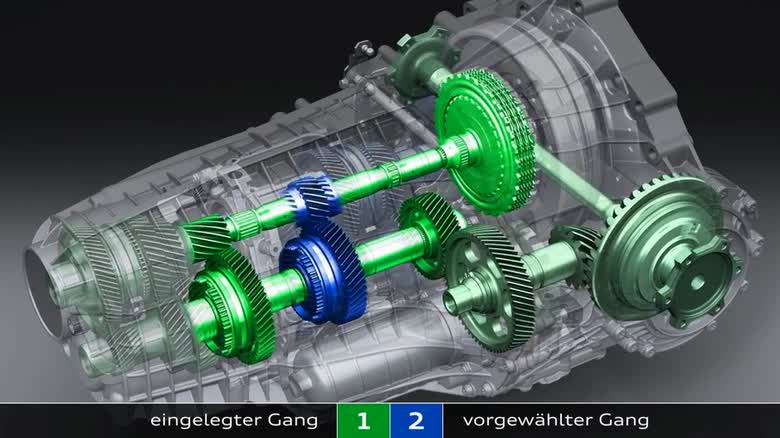
Audi A6 Avant ultra – 7-speed S tronic S tronic
S tronic
The S tronic dual-clutch transmission is a successful technology. It combines the convenience of an automatic with the efficiency of a manual transmission, while adding its own dynamic touch. Throughout much of the model line-up, the S tronic is available in four different versions, with six or seven gears.
- Available media:
-


-
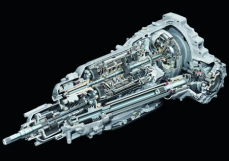
tiptronic
tiptronic
The great strength of this classic torque-converter transmission lies in its remarkably smooth shift action and starting performance. Audi uses tiptronic in many models with longitudinally mounted engines, with either six or eight gears depending on the model line.
- Available media:
-

-
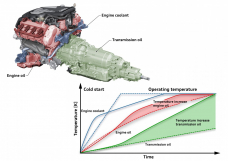
Efficiency in transmissions
Efficiency in transmissions
The manual and automatic transmissions from Audi are highly efficient. Irrespective of design, they have all been optimized with regard to internal friction and are notable for their wide gear-ratio spread.
- Available media:
-

Drivetrain

Engines and drivetrain are signature areas of excellence at Audi. The brand with the four rings has played a crucial pioneering role in a host of technical fields - from engine technologies to transmission technologies to quattro permanent all-wheel drive.